
Let’s explore Europe!
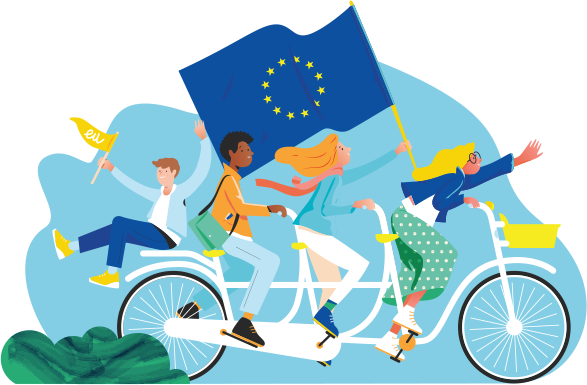
Hello and welcome to the EU!
We come from different countries and speak different languages, but the European continent is the home we share. Countries have been working together since the very beginning of the European Union (EU) to help each other and make sure EU countries live together in peace. Soon it will be your generation’s turn to take charge. You’re the future of the EU!
So let’s discover more about the EU together. In the first four sections, you’ll discover what the European Union is, how it came to be, and how it affects your daily life. You can read this publication section by section or choose the sections that interest you most.
As we go along, you’ll be invited to take part in the discussions suggested in each section and to test yourself to see how much you’ve learnt. You’ll find the answers to the activities and quizzes in Section 5.
Additional sources in Section 6 will help you discover more about the EU.
For more information, quizzes and games, make sure you visit the Learning Corner website.
Are you ready? Let’s begin!
| HTML | ||||
|---|---|---|---|---|
| This publication is available in the following formats |  HTML Let’s explore Europe! HTML Let’s explore Europe! |
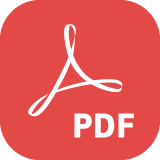 PDF Let’s explore Europe! PDF Let’s explore Europe!
|
 Paper Let’s explore Europe! Paper Let’s explore Europe! |
The EU: United in diversity
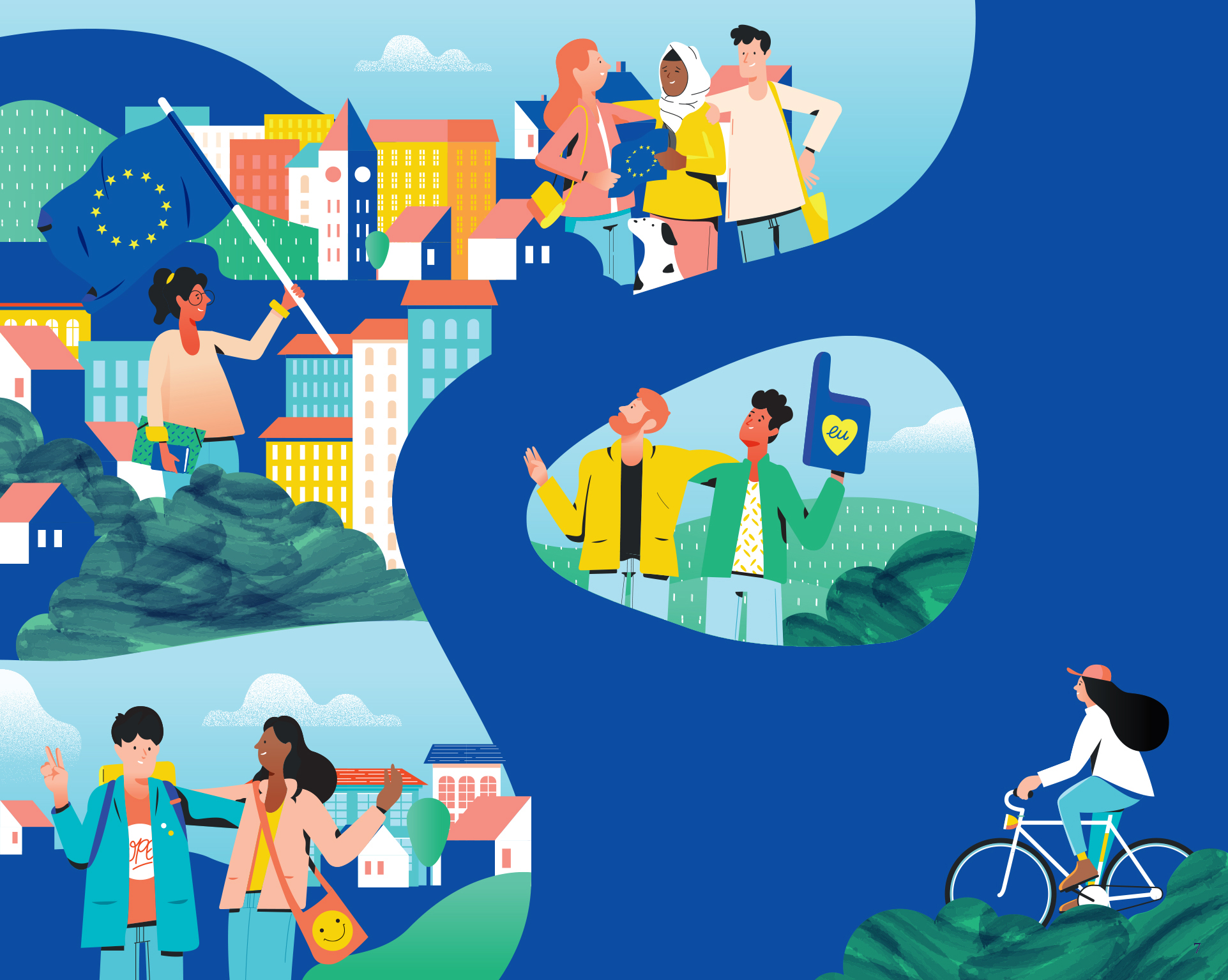
The continent of Europe is very diverse not only geographically but also culturally. It covers 44 countries and is home to over 700 million people.
In 27 of these European countries, we have something important in common: we’re all part of the European Union. As well as being citizens or residents of our home country, we’re also citizens or residents of the EU.
We have different cultures and traditions, but we also share goals and values. This is summed up in the EU’s motto: United in diversity.
What is the European Union?
The European Union is a partnership between European countries, known as Member States, which have decided to join forces to build a better future together. EU countries work closely together to make life better for all of their people while respecting each country’s unique culture and traditions.
The EU was not always as big as it is today. When European countries started to cooperate economically in 1952, there were only six of them: Belgium, France, Germany, Italy, Luxembourg and the Netherlands. Over time, more and more countries decided to join, as you’ll discover in Section 3. The EU currently has 27 Member States.
The map below shows you all the EU countries – can you guess what their capitals are?
- Austria
- Belgium
- Bulgaria
- Croatia
- Cyprus
- Czechia
- Denmark
- Estonia
- Finland
- France
- Germany
- Greece
- Hungary
- Ireland
- Italy
- Latvia
- Lithuania
- Luxembourg
- Malta
- The Netherlands
- Poland
- Portugal
- Romania
- Slovakia
- Slovenia
- Spain
- Sweden
- Zagreb
- Dublin
- Helsinki
- Brussels
- Paris
- Vienna
- Budapest
- Berlin
- Athens
- Sofia
- Nicosia
- Copenhagen
- Tallinn
- Prague
- Stockholm
- Vilnius
- Valletta
- Rome
- Bratislava
- Madrid
- Riga
- Bucharest
- Lisbon
- Ljubljana
- Warsaw
- Amsterdam
- Luxembourg
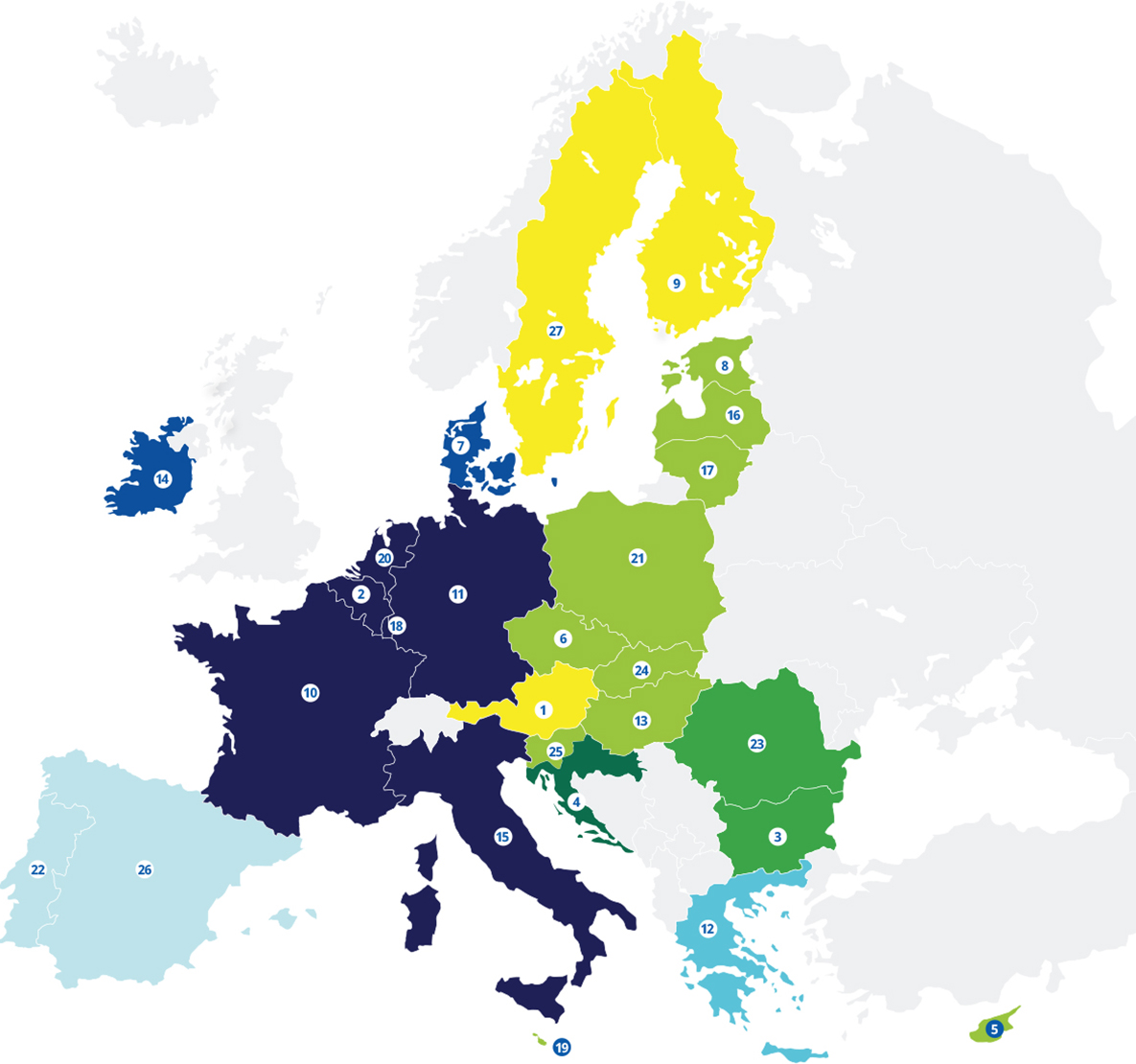
The six founding countries are Belgium, France, Germany, Italy, Luxembourg and the Netherlands. Denmark, Ireland and the United Kingdom joined the European Union on 1 January 1973, raising the number of countries to nine. Greece joined in 1981, followed by Portugal and Spain in 1986. In 1995, Austria, Finland and Sweden joined the European Union. The biggest enlargement took place in 2004, when 10 countries joined the EU: Cyprus, Czechia, Estonia, Hungary, Latvia, Lithuania, Malta, Poland, Slovakia and Slovenia. Bulgaria and Romania joined in 2007, and Croatia was the last country to join the EU in 2013.
The EU has nine regions which are geographically very distant from the European continent. These overseas territories (also known as ‘outermost regions’) are: French Guiana, Guadeloupe, Martinique, Mayotte, Réunion and Saint Martin (France), Azores and Madeira (Portugal), and the Canary Islands (Spain).
The continent of Europe was named after Europa, a princess from Greek mythology. According to the myth, Zeus, the god of sky and thunder, fell in love with her and took her off to the Island of Crete to live with him.
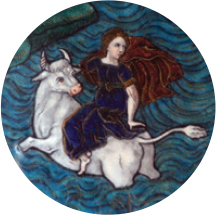
© Renaud Camus
United...
EU countries are diverse, but they’re united by important values, symbols and goals. Many EU countries also use the same currency: the euro. To understand what the EU stands for, it’s important to know what unites the countries in it.
COMMON EU VALUES
All countries that join the EU commit to the same set of values. These are set out in legal documents called the treaties 1, which contain rules that guide the EU’s work.
When countries join the EU, they promise to respect these values and to protect and defend all EU citizens. Being an EU citizen or resident means that you should share and respect these values too.
Values of the European Union
-
HUMAN DIGNITY
Each person is worthy of dignity and respect for who they are.
-
DEMOCRACY
This means for instance that we can vote and stand as a candidate in elections. EU countries and the EU itself are representative democracies.
-
RULE OF LAW
The EU and its Member States act following democratically written laws. The rule of law also requires that the justice system be independent.
-
FREEDOM
All EU citizens are free. This means for instance that we can think and express ourselves freely, choose our religion, and have the right to education, privacy and property.
-
EQUALITY
All EU citizens are equal. This means that laws apply to everyone in the same way, and that nobody is discriminated against because of their gender, religion, race or other personal characteristics.
-
HUMAN RIGHTS
Human rights are the basic rights and freedoms that belong to everyone in the world, from birth until death. They include, for instance, dignity, fairness, equality, respect and independence. These rights are defined and protected by law.
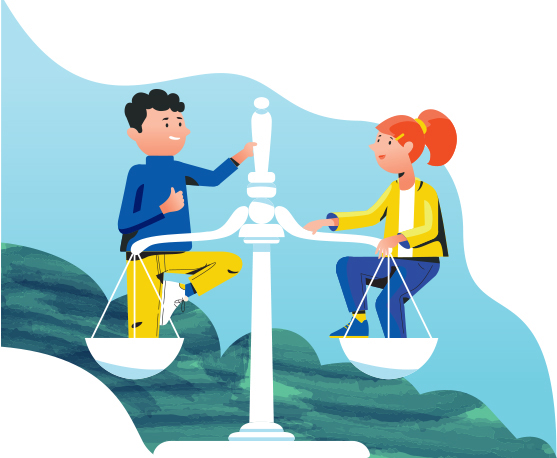
These values and our rights as EU citizens are set out in the EU Charter of Fundamental Rights.
Children’s rights are specifically mentioned in Article 24 of the EU Charter of Fundamental Rights. Have a look at the European Union's plan for children's rights, which was written for and with children: https://europa.eu/!jmqwcJ.
It’s illegal to discriminate against someone because of their sexual orientation or gender identity in the EU. For example, LGBTI (lesbian, gay, bisexual, transgender and intersex) rights must be respected in education, employment and healthcare.
What do the EU values mean to you? How do you show that you respect human dignity and human rights in the classroom, at home, on holiday or with friends?
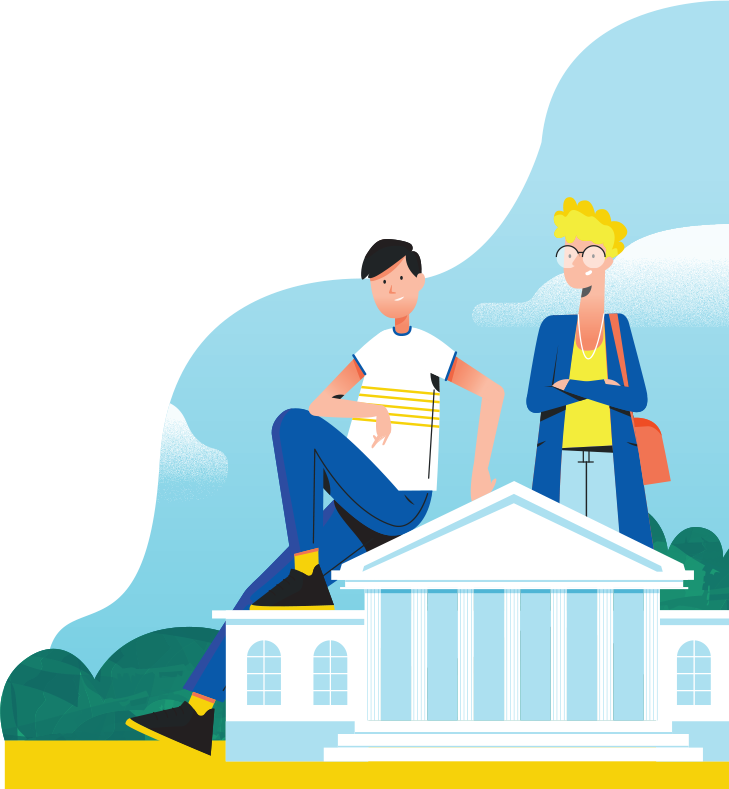
COMMON EU SYMBOLS
Just as each country has its own flag, anthem and national day, so does the European Union.
The European flag symbolises unity and harmony among EU countries. It is blue with 12 golden stars in a circle, because both the number and the shape represent perfection and entirety. EU leaders adopted it as the official flag of the European Union in 1985. You can see it flying above parliaments, other buildings and monuments all over the EU. It shows that EU countries are united and act together.
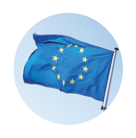
The European anthem is called Ode to Joy. It’s based on a poem by Friedrich von Schiller. The famous composer and pianist Ludwig van Beethoven used the poem for his Ninth Symphony, part of which later became the European anthem. It represents the European ideals of freedom, peace and solidarity. In Beethoven’s Symphony, a choir sings the poem in German, but when used as the European anthem it has no words, only music.
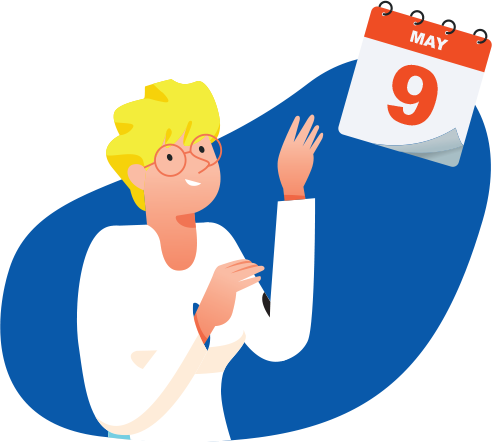
Europe Day is on 9 May. On this day in 1950, the foreign minister of France, Robert Schuman, introduced the idea for a new form of cooperation that would make another war between European countries unthinkable. The Schuman Declaration, as it’s known, was the first big step towards creating the EU we know today. That’s why we celebrate peace and unity in Europe on this day every year. Look out for the activities to mark this special day in your country.
 You can listen to the European anthem here.
You can listen to the European anthem here.
What are your country’s symbols? Where do they come from? Do you know the symbols of any other EU countries?
Have you seen the European flag in your country? Where?
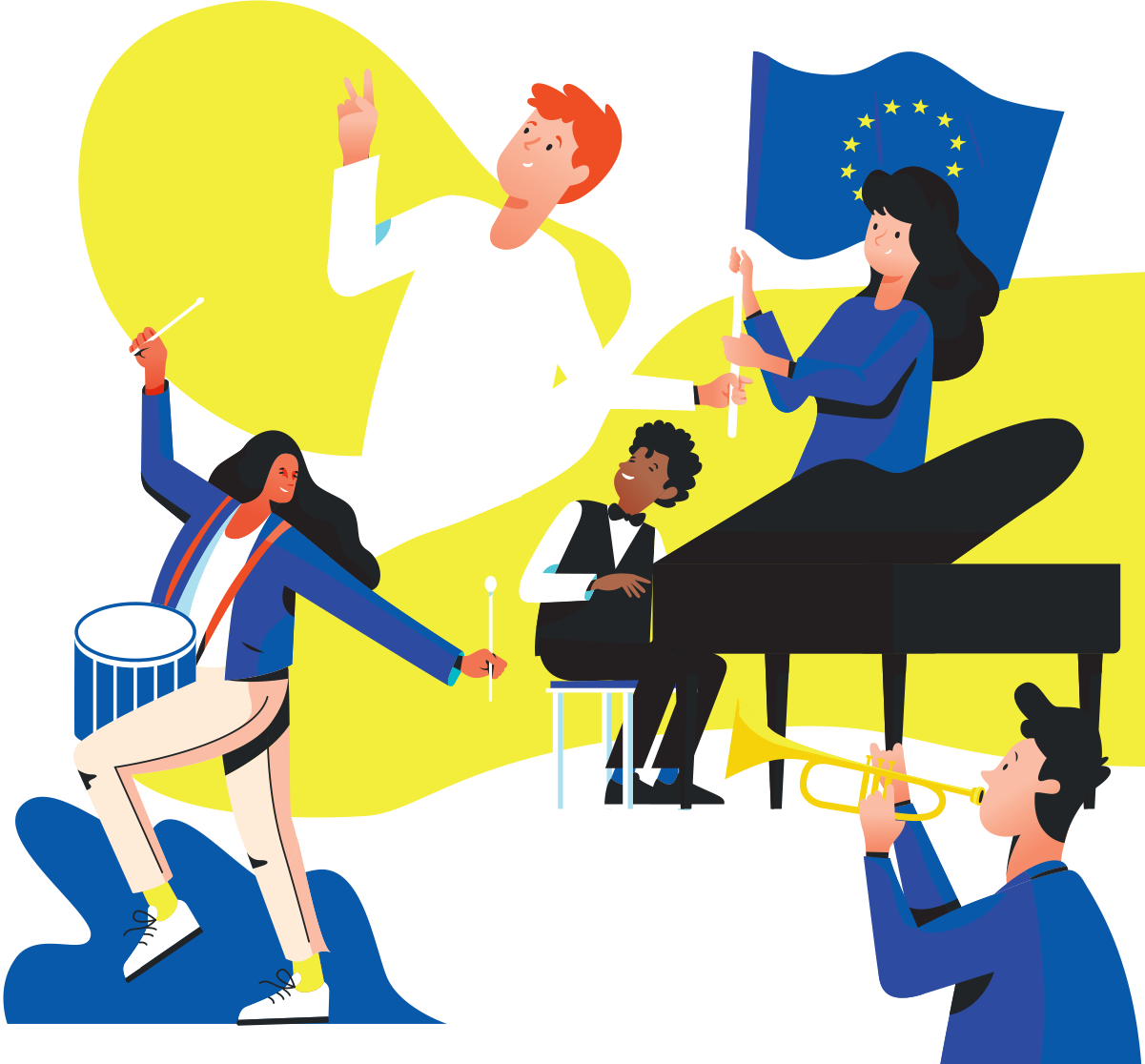
COMMON EU GOALS
EU countries are not only united by common values and symbols; they have also agreed on a set of goals that guides the work of the European Union as a whole. When EU leaders take decisions collectively for all EU countries, they pay close attention to these goals so that all EU countries remain united. See more about who does what in the EU in Section 4.
The 8 goals of the European Union
- Peace, promotion of EU values and the well-being of everyone
- Freedom, security and justice
- Strong and sustainable European economies
- Social inclusion and equality
- Scientific and technological progress
- Solidarity among EU countries
- Respect for Europe’s cultures and languages
- Economic and monetary union
THE EURO
Many EU countries also share a common currency: the euro. Today 20 EU countries have replaced their national currencies with the euro and more than 341 million people use it every day. Together these countries form the euro area.
The euro banknotes were designed by Reinhold Gerstetter, a German graphic artist and designer. They feature doors and windows in different architectural styles, symbolising openness and connection. While all euro banknotes are the same in every country, the coins are slightly different. One side, designed by Luc Luycx, a Belgian designer working for the Royal Belgian Mint, shows a map of Europe and is the same for every country. On the other side, each country has its own design.
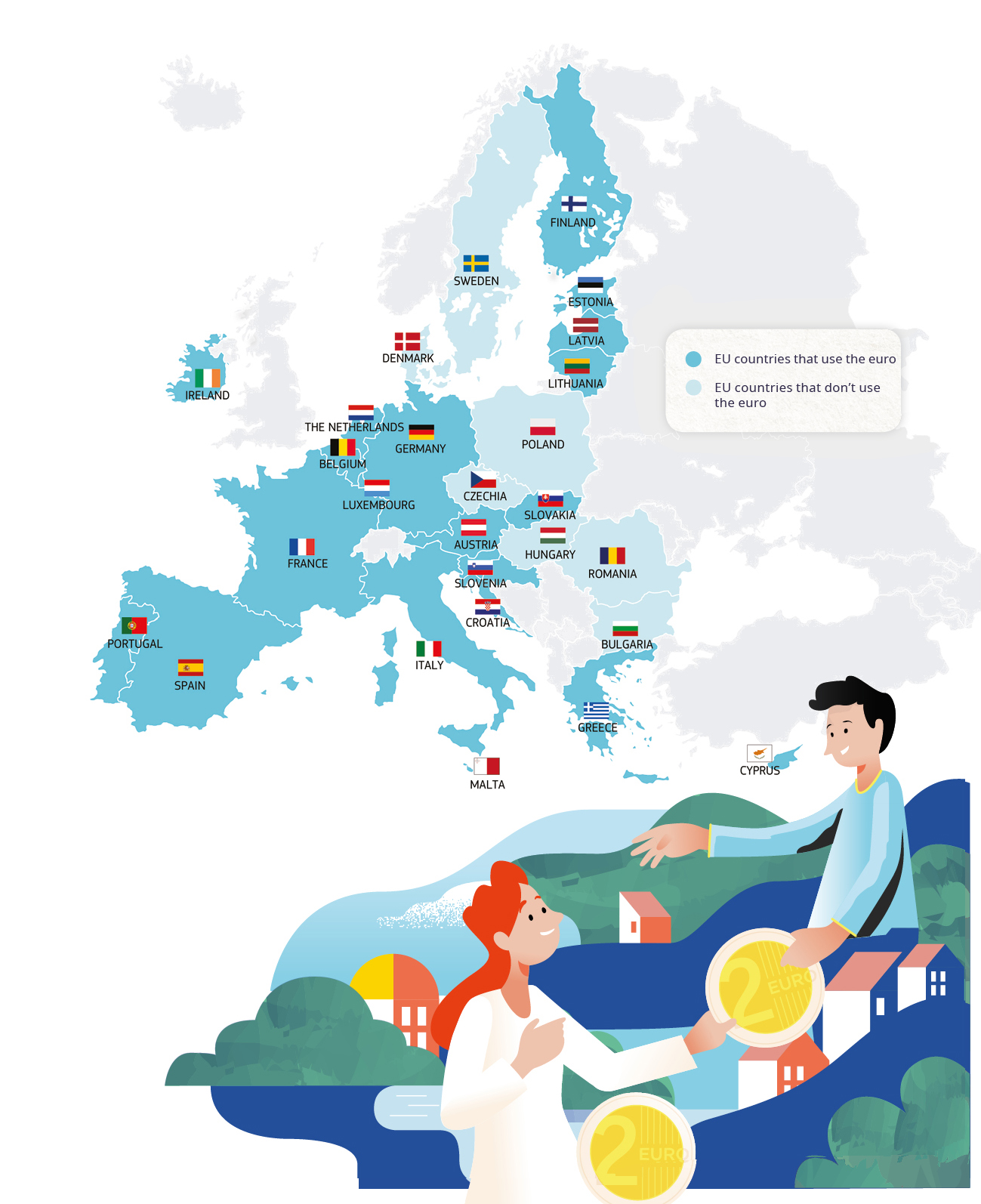
The EU countries which are part of the euro area are Austria, Belgium, Croatia, Cyprus, Estonia, Finland, France, Germany, Greece, Ireland, Italy, Latvia, Lithuania, Luxembourg, Malta, the Netherlands, Portugal, Slovakia, Slovenia and Spain. Some countries are EU countries but do not use the euro. Those are Bulgaria, Czechia, Denmark, Hungary, Poland, Romania and Sweden.
Can you guess which country these euro coins come from?
 You can find some help on this website.
You can find some help on this website.
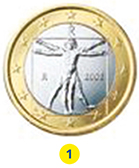
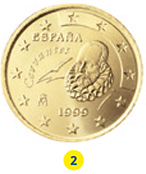
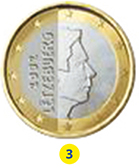
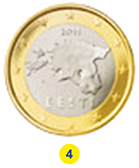
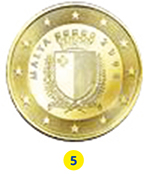
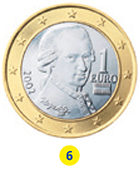
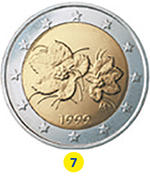
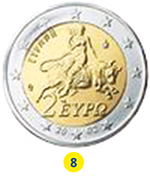

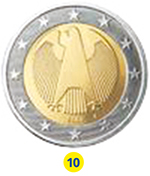
...in diversity!
While working together towards shared goals, EU countries celebrate each other’s rich cultures and traditions, which make the EU so unique and diverse. The fact that we’re all different makes life more interesting, and the same is true of EU countries! This is why EU countries cherish their differences as well as their similarities.
EU LANGUAGES
More than 200 languages are spoken in Europe. The EU has 24 official languages: Bulgarian, Croatian, Czech, Danish, Dutch, English, Estonian, Finnish, French, German, Greek, Hungarian, Irish, Italian, Latvian, Lithuanian, Maltese, Polish, Portuguese, Romanian, Slovak, Slovenian, Spanish and Swedish. Most of them belong to three large groups or ‘families’: Germanic, Slavic or Romance.
Here’s how to say ‘Good morning’ or ‘Hello’ in all the EU official languages.
GERMANIC
DANISH: God morgen
DUTCH: Goedemorgen
ENGLISH: Good morning
GERMAN: Guten Morgen
SWEDISH: God morgon
ROMANCE
FRENCH: Bonjour
ITALIAN: Buongiorno
PORTUGUESE: Bom dia
ROMANIAN: Bună dimineaţa
SPANISH: Buenos días
SLAVIC
BULGARIAN: Dobró útro
CROATIAN: Dobro jutro
CZECH: Dobré ráno
POLISH: Dzień dobry
SLOVAK: Dobré ráno
SLOVENE: Dobro jutro
You can see the family likeness in these examples. But there are other EU languages that don’t belong to these language families.
Here’s how to say ‘Good morning’ or ‘Hello’ in these languages.
ESTONIAN: Tere hommikust
FINNISH: Hyvää huomenta
GREEK: Kalimera
HUNGARIAN: Jó reggelt
IRISH: Dia dhuit
LATVIAN: Labrīt
LITHUANIAN: Labas rytas
MALTESE: L-Għodwa t-Tajba
Discover more about EU languages and find out how they are spoken here: europa.eu/!JvQGmC
Having this wide range of official languages means that you can contact the EU and receive a response in one of your country’s official languages, if it is an EU official language. Politicians can also communicate in their own language, again provided that it is an EU official language, because translators and interpreters help them work together. The decisions taken by the EU are made available in the 24 official languages, so the public can follow what’s happening.
Are you learning another EU language at school? Is it very different from yours?
How many languages do you know? Is there a particular language you’d like to learn? Why?
Do you recognise these monuments? Match the photograph to the EU country.
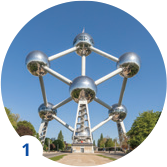
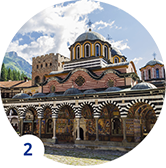
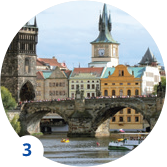
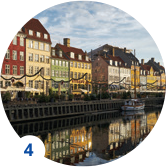
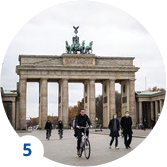
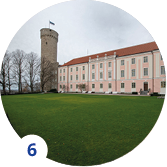
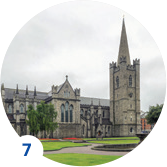

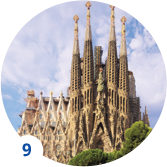
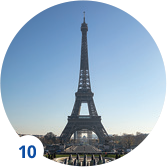
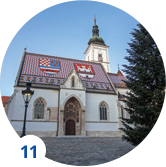
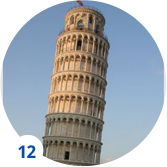

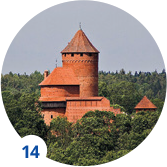
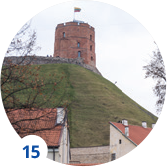
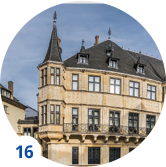

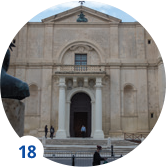
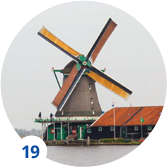
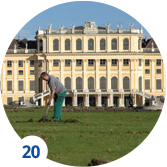

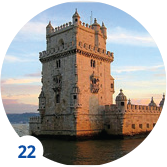

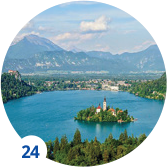
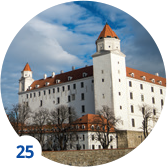
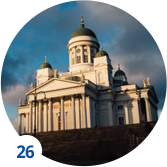
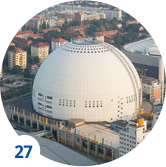
© Cris from Lisboa • © Florin Şarpe • © Pixabay - Elstef • © Dennis Jarvis • © Arild Vågen • © Krzysztof Golik • © Ad Meskens • © Hotice Hsu • © Penny Morlock • © C messier • © Diliff • © Fawksik
EUROPEAN LANDSCAPES AND MONUMENTS
From Alpine meadows and marshlands to the turquoise Adriatic Sea, the European Union offers a wide range of diverse landscapes. The EU is also home to rich cultural traditions and magnificent monuments that are known worldwide. From renaissance palaces and gothic cathedrals to beautiful parks and squares, there’s plenty to see and enjoy in all EU countries.
This is just a taste of some of the rich cultural diversity of EU countries. But there’s much more to discover! Check out the game The EU: what’s it all about? to find out more about each EU country.
Activity: end of Section 1 quiz
 Can you name two things that unite EU countries?
Can you name two things that unite EU countries?
 How many EU countries do not use the euro?
How many EU countries do not use the euro?
 How many official languages does the EU have?
How many official languages does the EU have?
 What do the stars on the EU flag represent?
What do the stars on the EU flag represent?
 Can you explain what human rights are and how they relate to the EU?
Can you explain what human rights are and how they relate to the EU?
The EU in your daily life
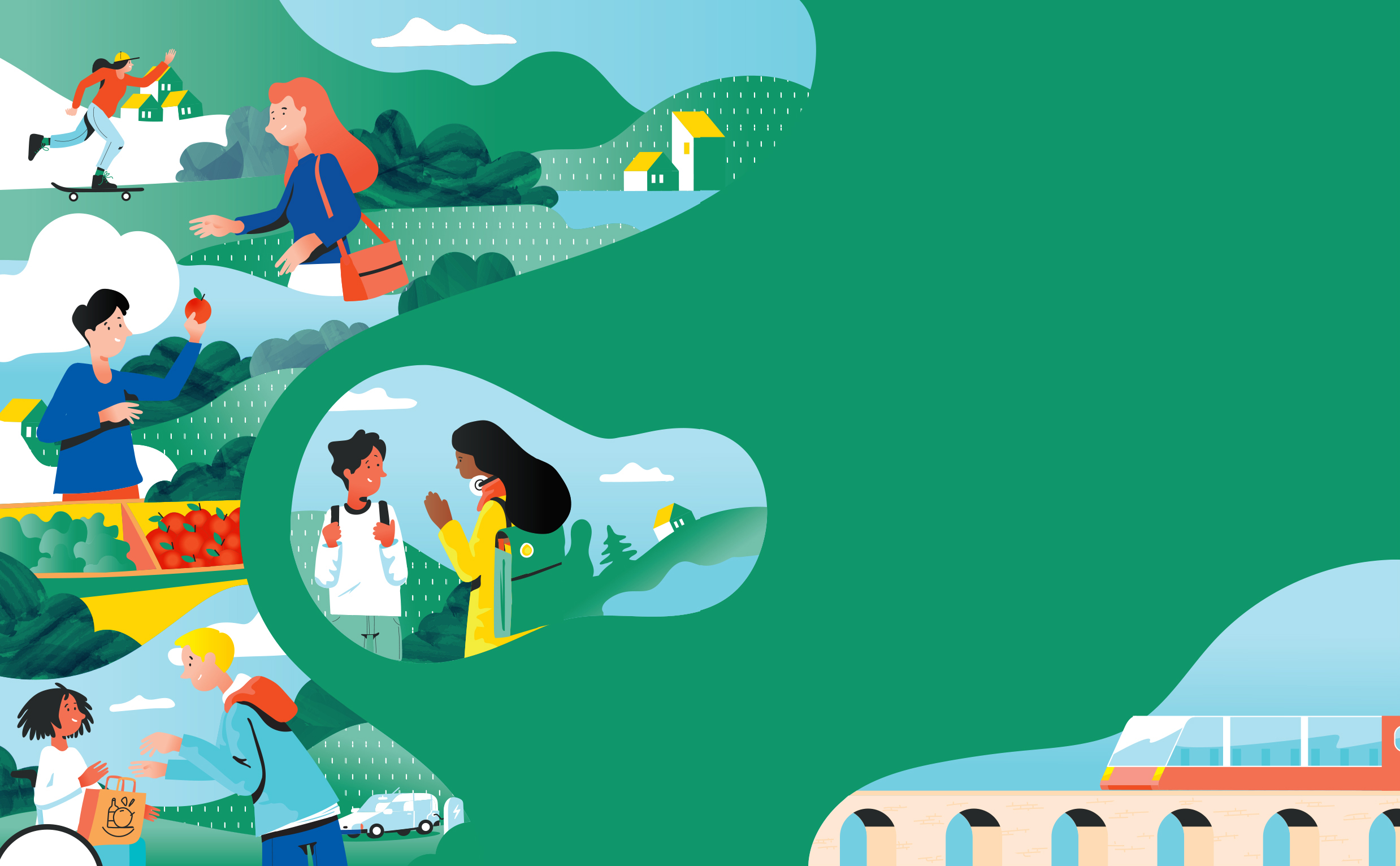
Even if we don’t always realise it, the European Union plays an important part in our daily lives. This section shows you some of the many benefits of living in the EU.
Life without borders
The European Union makes it easy for its citizens to move freely from one EU country to another. They can live, study or work in any EU country.
The Your Europe website offers you practical help and advice about life, work and travel in other EU countries.
The EU supports people who want to spend time abroad to learn a language, benefit from new experiences and get to know other cultures. There are many opportunities to experience other countries. Read on to discover what they are!

Study, volunteer and discover
If you want to study, train or take part in a youth exchange in one of 33 countries around Europe and beyond, check out the opportunities available under the Erasmus+ programme. The programme is open to both teenagers and adults from EU and non-EU countries, be they students, teachers or other working people.
 Listen to the experiences of young people who have taken part in an Erasmus+ youth exchange.
Listen to the experiences of young people who have taken part in an Erasmus+ youth exchange.
Thanks to the European Solidarity Corps, young adults can volunteer abroad (or at home) for a cause that’s important to them. It could be anything from building a new skate park or helping people in need to a beach clean-up.
The DiscoverEU programme gives 18-year-olds the chance to get their hands on a free travel pass to explore the EU for up to 1 month.

Working in the EU
Do you know what you want to do after you finish school or university, or are you still thinking about it? It’s not always easy to decide what to do for a living, but starting a career doesn’t mean that you have to stop exploring the EU. As an EU citizen, you can work in another EU country – and you won’t need a work permit. You have the same access to the job market and the same working conditions, rights and obligations as the people living in that country.
Sometimes acquiring some additional skills and qualifications to find a job can be difficult. The EU Youth Guarantee scheme helps young people to train in the skills that employers need. This may be in the form of on-the-job training or individual career guidance.
The European employment services website might help you once you start looking for a job, traineeship or apprenticeship in another EU country. It also helps employers find candidates in other EU countries to fill their vacancies.
Do you want to study or volunteer abroad? Where would you like to go? How would such an experience benefit you?
Travelling in the EU
Travelling in Europe has become easier over time. Most EU countries have removed controls at their borders, becoming part of the Schengen area. This means that you don’t need to show your passport when travelling between 25 EU countries (Austria, Belgium, Bulgaria, Croatia, Czechia, Denmark, Estonia, Finland, France, Germany, Greece, Hungary, Italy, Latvia, Lithuania, Luxembourg, Malta, the Netherlands, Poland, Portugal, Romania, Slovenia, Slovakia, Spain and Sweden) and four non-EU countries (Iceland, Liechtenstein, Norway and Switzerland).
But crossing borders is only the first step.
Travelling in the EU
 As an EU resident, you can carry on using your mobile phone just like at home! In the past, calling or using mobile data abroad was very expensive. Today, these roaming fees no longer apply and you pay the same price for using your mobile as you would at home.
As an EU resident, you can carry on using your mobile phone just like at home! In the past, calling or using mobile data abroad was very expensive. Today, these roaming fees no longer apply and you pay the same price for using your mobile as you would at home.
 You can still watch your favourite TV series because the EU makes sure you can access your digital subscriptions wherever you are.
You can still watch your favourite TV series because the EU makes sure you can access your digital subscriptions wherever you are.
 If your trip is cancelled, whether it is by bus, train, ship or plane, you have the right to ask to get your money back because the EU protects your rights. The EU is the only area in the world where people are protected by a full set of passenger rights.
If your trip is cancelled, whether it is by bus, train, ship or plane, you have the right to ask to get your money back because the EU protects your rights. The EU is the only area in the world where people are protected by a full set of passenger rights.
 If you have an accident or fall ill when you’re travelling within the EU, the European Health Insurance Card ensures you can see a doctor or call an ambulance for the same price as locals:
If you have an accident or fall ill when you’re travelling within the EU, the European Health Insurance Card ensures you can see a doctor or call an ambulance for the same price as locals:
If you find yourself in danger in any EU country, you can call the European Emergency number 112, from any phone, free of charge.
EU funding makes a difference where you live
The European Union helps improve people’s lives by supporting new jobs, building new infrastructure and modernising public services such as schools and hospitals. Have a look around where you live, the EU might be much closer to you than you think!
The EU has helped fund thousands of projects over the years, for example:
 an open-air museum on the border between Germany and Czechia;
an open-air museum on the border between Germany and Czechia;
 a new sports facility in a rural district in Poland;
a new sports facility in a rural district in Poland;
 the distribution of fruit, vegetables and milk at school in all EU countries;
the distribution of fruit, vegetables and milk at school in all EU countries;
 a new swimming pool in Brussels;
a new swimming pool in Brussels;
 an extension of the Athens metro.
an extension of the Athens metro.
 Check out some EU-funded projects in various regions throughout Europe: https://kohesio.ec.europa.eu/en/
Check out some EU-funded projects in various regions throughout Europe: https://kohesio.ec.europa.eu/en/
The EU organises many initiatives where European cities can compete for a title and present their achievements. Every year, European cities compete to win titles such as European Capital of Culture, European Capital of Innovation, European Youth Capital and European Green Capital.

Consumer rights and safety
The European Union also has an influence on your daily life through specific laws and rules which ensure your safety and protect your rights as a consumer everywhere in the EU.
Products such as food, toys and cosmetics have to meet strict safety requirements before they can be sold within the EU.
There are over 100 000 experts in the EU who check the safety of food from the farm to your fork.
EU law also gives you a minimum 2-year guarantee when you buy consumer goods. So, if your washing machine breaks down after a year, it will have to be repaired or replaced free of charge regardless of where in the EU you bought it.
EU law also ensures that when you buy goods online, you have the right to cancel your order or return your purchase within 14 days if you change your mind.
If you have problems with a product bought in another EU country, you can contact the European Consumer Centres Network.
You have the right to accurate information about the quality of the products you buy, no matter where you are in the EU. EU labelling rules help you find out quickly and easily if a product is organic, energy-efficient or made using traditional methods. This means that you can make fully informed decisions about what to buy.
Have a look around your house or at the shops you visit and see how many of these labels you can find. Do you know what they mean?
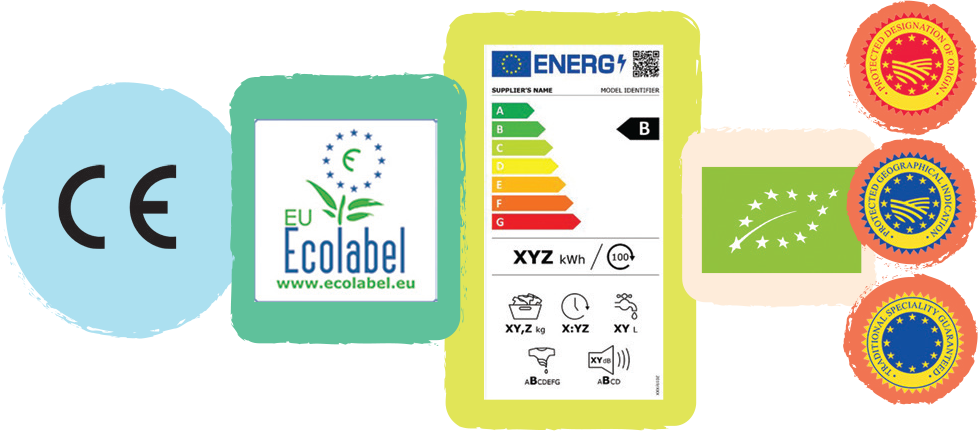
Keeping up with the digital age
Many of us cannot imagine life without the internet or digital technologies. When we watch films, shop or use a map to find our way around, we often do it online.
However, not everyone in the European Union has the same opportunities to access and use technology, especially those who live in areas far away from big cities. The EU is continually working to provide internet access to all Europeans. Thanks to an EU-funded initiative, Wifi4EU, Wi-Fi hotspots have been set up in around 8 000 communities across the EU. You can connect to the internet for free in museums, libraries, parks and other public areas where you see the Wifi4EU symbol.
While internet access gives us many advantages, such as easy access to information and efficient services, it also poses risks to us. The Better Internet for Kids Strategy helps children and young people stay safe when using the internet or mobile technologies.
 Check out the map for more information about your country: https://www.betterinternetforkids.eu/sic
Check out the map for more information about your country: https://www.betterinternetforkids.eu/sic
What is artificial intelligence?
Have you ever seen a robot? Did you know that your smartphone also uses artificial intelligence? Discover everything about Europe’s digital future in the Digital Explorers cartoon series.
Are you curious about how the EU protects you online? The new rules introduced in the Digital Services Act (DSA) oblige leading technology companies like Meta and online platforms such as TikTok to create a fairer and safer online world, and to find ways to address issues such as cyberbullying and illegal content.
Social media, online shops and mobile apps require you to trust companies with personal information that risk being lost or stolen. Thanks to the EU General Data Protection Regulation (GDPR), your personal information – name, address, age, etc. – is protected. It cannot be used without permission or for purposes that you haven’t agreed to.
 Find out more about data protection in the EU: https://europa.eu/!BVTtNC
Find out more about data protection in the EU: https://europa.eu/!BVTtNC
The internet has made looking for and accessing information easy and fast. However, inaccurate or harmful information can spread quickly online, especially on social media platforms. The EU actively exposes such disinformation and works together with social media companies to limit its spread.
We can all help to stop the spread of misleading information online. What questions should you ask yourself before sharing a story on social media? Find out some useful tips on how to identify conspiracy theories.

Protecting the environment
We enjoy nature in many ways, from eating delicious food to walking through breathtaking landscapes. But more importantly, we depend on it for our air, water, energy and raw materials. Since pollution does not stop at borders, countries have to work together to take care of the environment. Climate change has made the task of protecting the environment more urgent than ever. The European Union aims to become climate neutral by 2050, and it’s taking action to make sure that we benefit from a flourishing natural environment.
The EU’s plan to make Europe the first climateneutral continent in the world by 2050 is called the European Green Deal.
 Find out more about the Green Deal here: https://europa.eu/!Tr74bn
Find out more about the Green Deal here: https://europa.eu/!Tr74bn
Natura 2000 protects around 2 000 animal and plant species and 230 habitat types throughout the EU. This represents 18 % of the EU’s land area and 6 % of its waters, making it the largest network of protected areas in the world!
The EU LIFE programme, which funds projects that protect the environment and fight climate change, has co-financed more than 6 000 projects over the past 30 years.
 Check out the projects in your country.
Check out the projects in your country.
Thanks to EU laws, we can enjoy clean drinking and swimming water nearly everywhere in the EU. Our seas are becoming cleaner in other ways, too: the EU has banned single-use plastics, which make up 70 % of all marine litter. To minimise the pollution of soil and air as well as water, the EU promotes sustainable farming practices. It has placed limits on the use of chemical and hazardous pesticides and fertilisers.
The fight against climate change is a top priority for the EU. All EU countries have agreed that by 2030 they should:
 drastically reduce their greenhouse gas emissions and energy use;
drastically reduce their greenhouse gas emissions and energy use;
 produce more of their energy from renewable sources (such as wind, solar or hydro power).
produce more of their energy from renewable sources (such as wind, solar or hydro power).
How we get our energy plays an important part in the fight against climate change. Learn more in these videos:
On average, every person in the EU throws away more than a kilo of rubbish every day. Have a look at the video:
 https://europa.eu/learning-corner/food-waste_en
https://europa.eu/learning-corner/food-waste_en
Do you recognise yourself in this video?
What little things could you do in your daily life to help you live in a more environmentally friendly way?
 Find out more about what the EU does to protect the environment and fight climate change.
Find out more about what the EU does to protect the environment and fight climate change.

Supporting science and innovation
Science and technology touch almost every part of our daily lives – from the food we eat, the medicines we take and the healthcare we receive to the transport we use and how we work and spend our leisure time. The European Union helps scientists, researchers and innovators from across Europe to improve our lives and solve some of the biggest challenges facing the world.

The EU funds scientific research. For example, its research and innovation programme has enabled scientists to:
 make the first ever image of a black hole with the Event Horizon Telescope;
make the first ever image of a black hole with the Event Horizon Telescope;
 discover three Earth-like, habitable planets;
discover three Earth-like, habitable planets;
 develop a way to detect cancer in a person’s breath.
develop a way to detect cancer in a person’s breath.
Check out other scientific discoveries made thanks to EU funding:
The EU wants to see more women and girls involved in science. Every year it launches the EU Prize for Women innovators, which celebrates female leaders in innovation and aims to inspire the next generation to follow in their footsteps.
During the COVID-19 pandemic, the EU helped vaccine producers cover the costs of researching and developing vaccines. Scientists were able to produce several safe and effective vaccines against COVID-19 less than a year after the pandemic began.
The EU countries joined forces to buy and distribute vaccines throughout the EU.
Can you think of a problem that you would like science to solve? Why?
The EU’s satellite programme – Copernicus – is the most advanced system in the world for monitoring the planet and tracking changes in the climate and environment.
Find out more about Copernicus:

The EU in the world
As well as having an impact on our daily life, the European Union also plays a significant role in the rest of the world.
It has trade agreements with many different countries around the world, such as Canada, Japan, New Zealand and the United States, which make it easier to do business together. All trade agreements negotiated by the EU are transparent and require the trading partners to protect workers’ rights and the environment.
One of the EU’s key values is solidarity, both between the EU countries and with other countries. The EU works to end poverty, preserve peace, and deliver humanitarian aid. A large network of humanitarian experts in over 40 countries worldwide enables the EU to provide food, shelter, medical care and education for some of the world’s most vulnerable people.
Together, the EU countries are the world’s biggest donor of humanitarian aid.
When there are cases of unexpected disasters in Europe or elsewhere in the world, EU countries can provide aid and assistance through a coordinated response system known as the civil protection mechanism. Since 2001, it has been activated over 700 times to respond to emergencies.
 Find out more about the EU’s role in the world:
Find out more about the EU’s role in the world:
 on trade;
on trade;
Activity: end of Section 2 quiz
 True or false: the EU only affects your daily life when you travel abroad.
True or false: the EU only affects your daily life when you travel abroad.
 What programme allows you to volunteer abroad for a cause close to your heart?
What programme allows you to volunteer abroad for a cause close to your heart?
 True or false: in the EU, you can return products you bought online within a month of purchase.
True or false: in the EU, you can return products you bought online within a month of purchase.
 What is Natura 2000?
What is Natura 2000?
 Can you explain how the EU protects your personal data, such as your name, age or address?
Can you explain how the EU protects your personal data, such as your name, age or address?
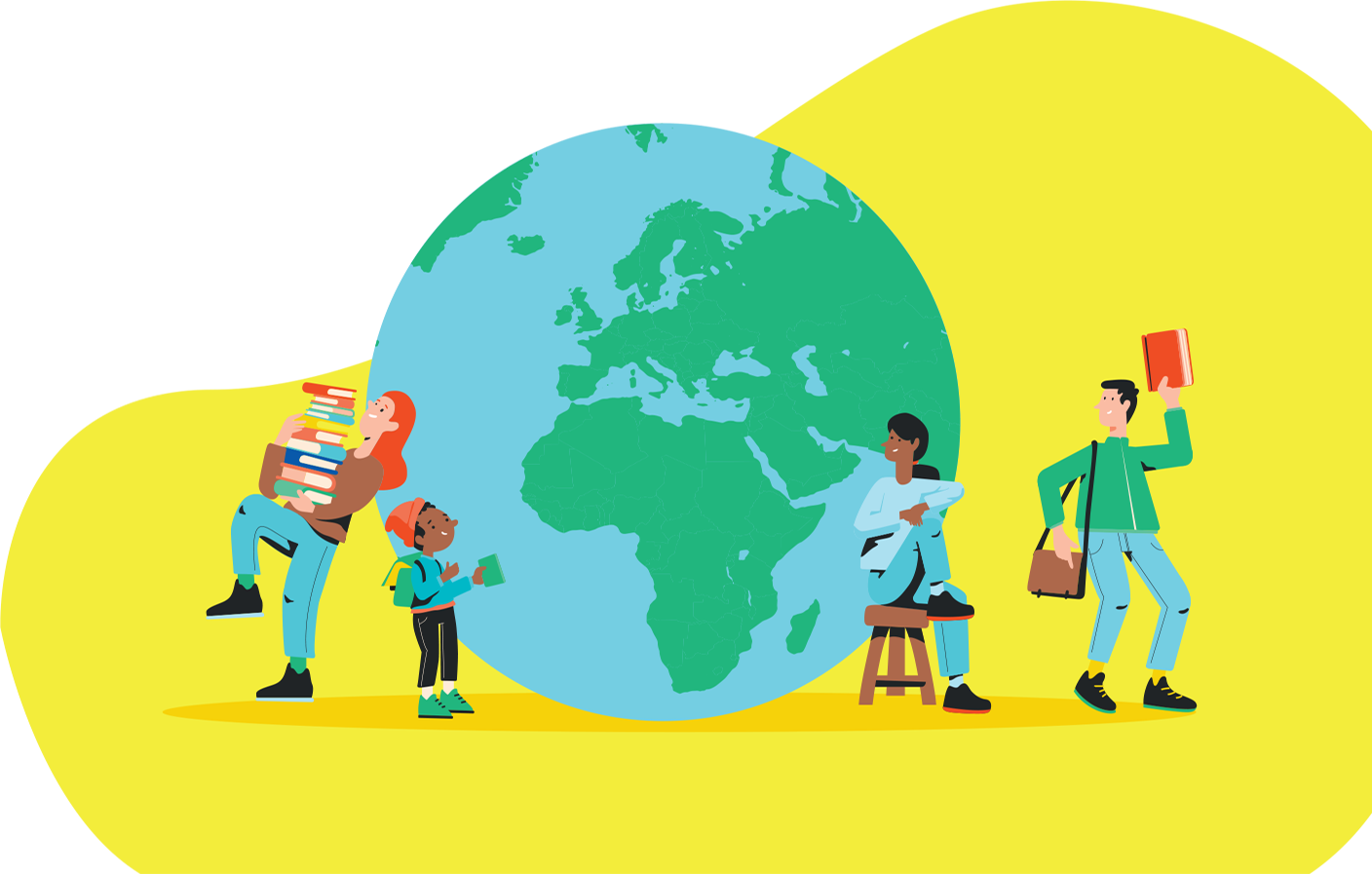
The EU: A journey through time

The European Union was not always the same as it is today, nor was it always known by the same name. It was created step by step, and the ambition that inspired its founders still guides it today. Here are some of the historical events that gave rise to the EU, and the many changes it went through over the years.
1945
World War II ends in Europe.
There have been many casualties, and entire cities have been destroyed by bombings in Europe. People are determined that such devastation should never happen again.
 The Schuman Declaration.
The Schuman Declaration.
On 9 May, Robert Schuman gives a speech in which he presents a plan for a new form of political cooperation in Europe. The idea is for Europe’s nations to jointly manage the production of coal and steel, since this would mean no country could secretly arm itself against the others.
 Read the Schuman Declaration in full.
Read the Schuman Declaration in full.
1950
1951
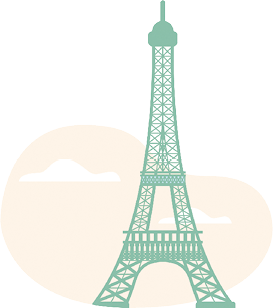 The Treaty of Paris establishing the European Coal and Steel Community is signed by Belgium, France, Germany, Italy, Luxembourg and the Netherlands, who decide to work together and help rebuild Europe from the ruins of war.
The Treaty of Paris establishing the European Coal and Steel Community is signed by Belgium, France, Germany, Italy, Luxembourg and the Netherlands, who decide to work together and help rebuild Europe from the ruins of war.
 The signing of the Treaties of Rome.
The signing of the Treaties of Rome.
The six countries work so well together that they decide to join forces in other areas. The European Economic Community (EEC) 2 and the European Atomic Energy Community (Euratom) are born. Together with the European Coal and Steel Community, they form what’s commonly known as the European Communities.
1957
1962
The Common Agricultural Policy is set up. It’s one of the EU’s oldest policies, supporting farmers and ensuring that Europe has a stable supply of affordable, safe and good-quality food.
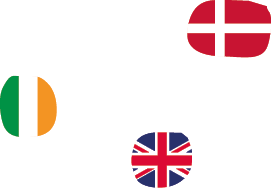 From six to nine countries. Denmark, Ireland and the United Kingdom join the European Communities.
From six to nine countries. Denmark, Ireland and the United Kingdom join the European Communities.
1973
1979
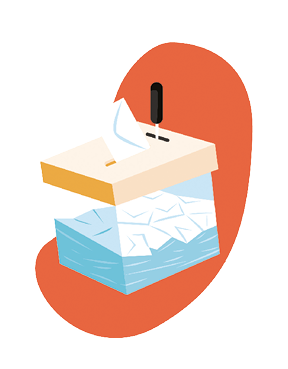 The first direct elections to the European Parliament take place. For the first time, European citizens can vote for who represents them in the European Parliament. The European elections are held every 5 years.
The first direct elections to the European Parliament take place. For the first time, European citizens can vote for who represents them in the European Parliament. The European elections are held every 5 years.
 Greece joins the European Communities, becoming the 10th Member State.
Greece joins the European Communities, becoming the 10th Member State.
1981
1986
 Spain and Portugal join the European Communities, bringing the total number of members to 12.
Spain and Portugal join the European Communities, bringing the total number of members to 12.
 The Erasmus programme is set up to help young Europeans study, train and volunteer abroad.
The Erasmus programme is set up to help young Europeans study, train and volunteer abroad.
1987
1992
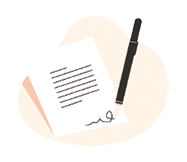 The Maastricht Treaty is signed. The European Union is created. The treaty introduces European citizenship and sets clear rules for the future euro. It also strengthens foreign and security policy and increases cooperation in justice and home affairs.
The Maastricht Treaty is signed. The European Union is created. The treaty introduces European citizenship and sets clear rules for the future euro. It also strengthens foreign and security policy and increases cooperation in justice and home affairs.
The Schengen Agreement abolishes all border controls between the seven countries that have signed it (at present 29 countries have signed it – See details in Section 2).
1995
1995
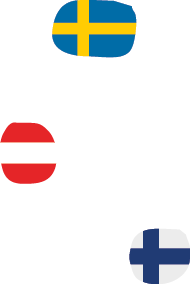 Austria, Finland and Sweden join the EU. There are now 15 member countries.
Austria, Finland and Sweden join the EU. There are now 15 member countries.
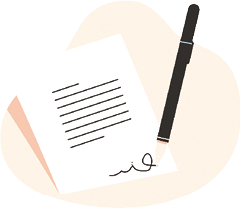 The Treaty of Nice is signed. Its main aim is to reform the EU institutions to prepare for the biggest enlargement 3 in the EU’s history.
The Treaty of Nice is signed. Its main aim is to reform the EU institutions to prepare for the biggest enlargement 3 in the EU’s history.
2001
2002
 Euro notes and coins become the legal currency in 12 EU countries (see more in Section 1).
Euro notes and coins become the legal currency in 12 EU countries (see more in Section 1).
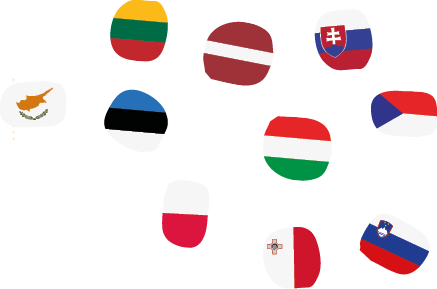 Ten new countries join the EU: Cyprus, Czechia, Estonia, Hungary, Latvia, Lithuania, Malta, Poland, Slovakia and Slovenia. Never before have so many countries joined the EU at once.
Ten new countries join the EU: Cyprus, Czechia, Estonia, Hungary, Latvia, Lithuania, Malta, Poland, Slovakia and Slovenia. Never before have so many countries joined the EU at once.
2004
2007
 Bulgaria and Romania join the EU, which now has 27 Member States.
Bulgaria and Romania join the EU, which now has 27 Member States.
The Treaty of Lisbon is signed. It introduces a new structure giving the EU a stronger role in the world and giving more weight to the voices of citizens and national governments.
2007
2012
 The Nobel Peace Prize is awarded to the EU for its role in transforming most of Europe from a continent of war to a continent of peace. The EU uses the prize money to help children who do not have the chance to grow up in peace.
The Nobel Peace Prize is awarded to the EU for its role in transforming most of Europe from a continent of war to a continent of peace. The EU uses the prize money to help children who do not have the chance to grow up in peace.
 Croatia joins the EU, becoming the 28th EU Member State.
Croatia joins the EU, becoming the 28th EU Member State.
2013
2017
The end of roaming fees. EU residents can now call, text and connect to the internet on their mobile phones anywhere in the EU, without extra costs.
Brexit. Following a referendum in 2016, the United Kingdom officially leaves the EU.
2020
2020
 NextGenerationEU. During the COVID-19 pandemic, many businesses lose revenue and people become unemployed. NextGenerationEU provides an extra EUR 750 billion in loans and grants to EU countries to help them rebuild their economies in a sustainable way. See: https://europa.eu/!jQ38vf
NextGenerationEU. During the COVID-19 pandemic, many businesses lose revenue and people become unemployed. NextGenerationEU provides an extra EUR 750 billion in loans and grants to EU countries to help them rebuild their economies in a sustainable way. See: https://europa.eu/!jQ38vf
The new Erasmus+ programme kicks off. With nearly double the previous budget, it will benefit 10 million people of all ages and backgrounds in Europe and beyond to gain different experiences in another country (see more in Section 2).
2021
Every action taken by the EU is based on treaties signed by all the EU countries after they have been negotiated and agreed upon. However, it takes a while, sometimes several years, for a treaty to become operational. This is why you’ll sometimes see two different dates for the same treaty: the ‘date of signing’ and the ‘date of entry into force’.
Find out more about the EU treaties.
WANT TO KNOW MORE ABOUT THE EU THROUGHOUT THE YEARS?
Take a trip back in time with the EU Timeline to discover important moments in history that made the EU what it is today.
Many visionary leaders – both men and women – inspired the EU we live in today. Without their energy and motivation, we would not be living in the peace and stability that seem so normal to us. Learn about the EU pioneers:
Activity: end of Section 3 quiz
 Can you name the six founding countries of the EU – What’s the name of the community they founded in 1951?
Can you name the six founding countries of the EU – What’s the name of the community they founded in 1951?
 What year did your country join the EU? Is it part of the euro area? Is it part of the Schengen area?
What year did your country join the EU? Is it part of the euro area? Is it part of the Schengen area?
 Which country joined the EU most recently?
Which country joined the EU most recently?
 What prize was the EU awarded in 2012 and for what reason?
What prize was the EU awarded in 2012 and for what reason?
 Who are the EU pioneers?
Who are the EU pioneers?
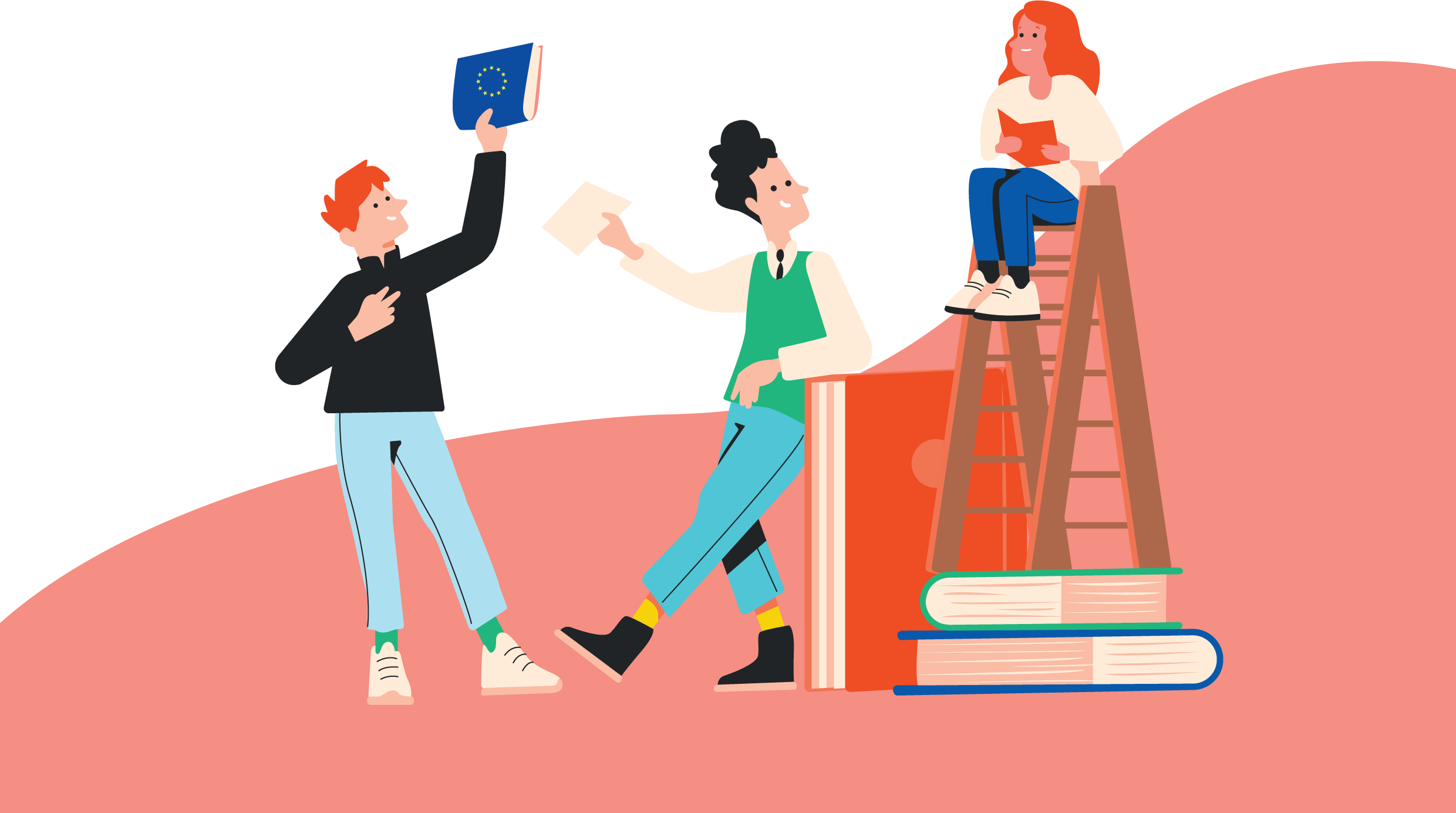
The EU: How does it work?
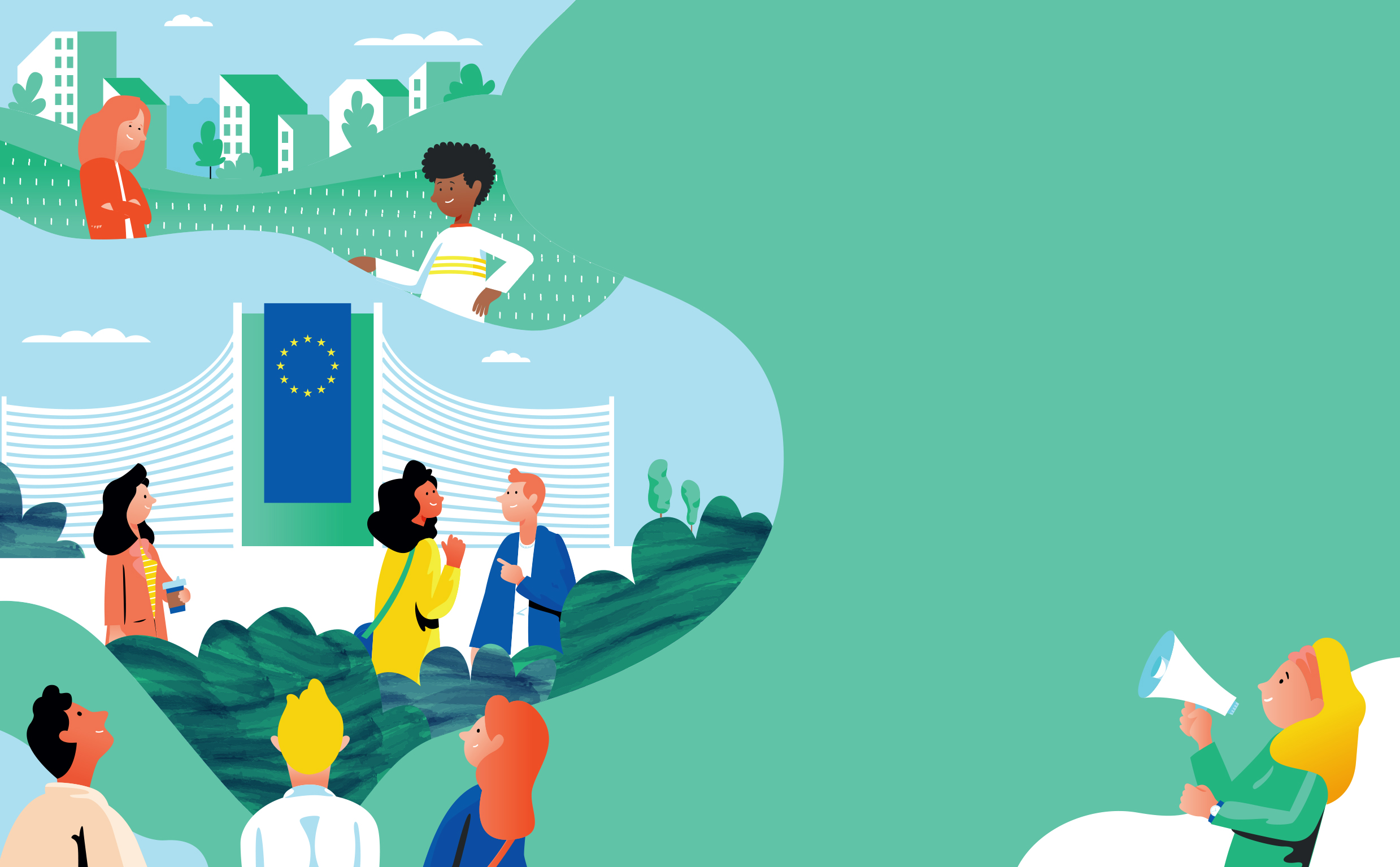
You may have heard about decisions taken by ‘Brussels’. This is an expression often used to refer to the European Union, as this is where most of the EU institutions have their headquarters. What exactly are their roles and what kind of decisions can they take? What role do national governments play in the EU? This section will tell you about how the EU works. You’ll also learn about how you can make your own voice heard at the European level.
Who are the key EU players?
EU countries have agreed clearly on what the EU should and should not do; the aim is for the EU to act only if a goal can be better achieved at EU level than at national, regional or local level. The rules are defined in the EU treaties that you learned about in Section 3.
Let’s look at the EU institutions, where the key players from all EU countries meet, discuss and decide on laws together.
THE EUROPEAN PARLIAMENT
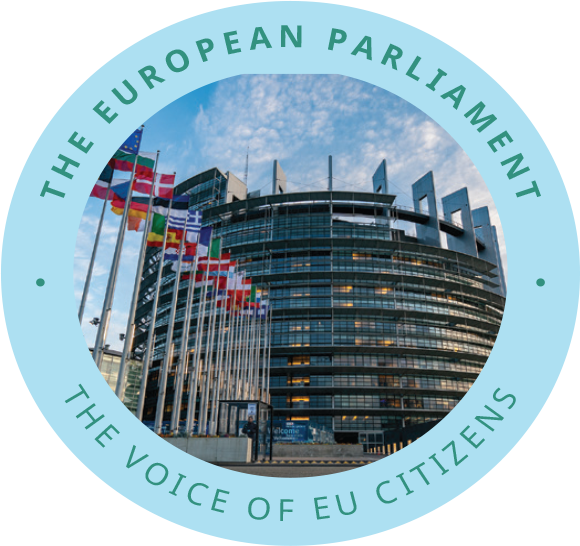
It is the voice of EU citizens.
 Where is it based?
Where is it based?
Strasbourg (France), Brussels (Belgium) and Luxembourg (Luxembourg).
 Who works there?
Who works there?
- 720 Members of the European Parliament (MEPs). MEPs are not grouped by their nationality. They belong to groups from several countries who share similar political views.
- They represent the citizens of EU countries.
- They’re elected directly by EU citizens every 5 years. The number of MEPs representing each country depends on the size of the country’s population.
 Who’s the President?
Who’s the President?
Roberta Metsola – elected by MEPs.
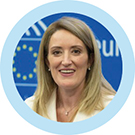
 What does it do?
What does it do?
- The European Parliament debates and adopts EU legislation together with the Council of the European Union.
- It decides on the EU budget together with the Council of the European Union.
- It monitors the proper use of EU funds and supervises other EU Institutions, in particular the European Commission. It elects the President of the European Commission and has the right to approve and dismiss the whole European Commission.
 Find out more about the European Parliament.
Find out more about the European Parliament.
THE EUROPEAN COUNCIL
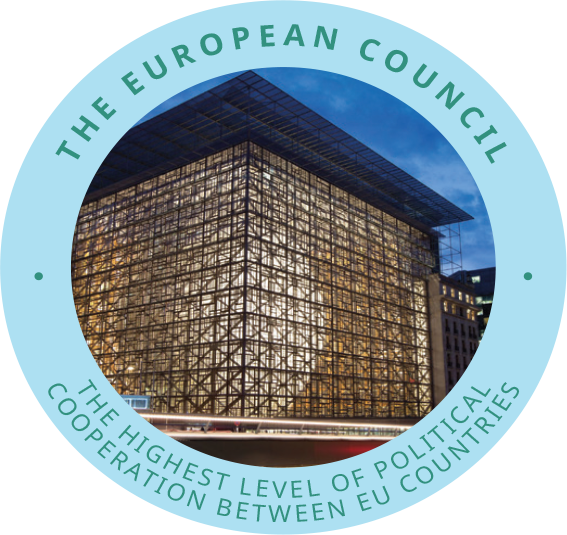
It represents the highest level of political cooperation between EU countries.
 Where is it based? Brussels (Belgium).
Where is it based? Brussels (Belgium).
 Who works there?
Who works there?
Heads of State and Heads of Government of all EU countries, chaired by a president.
 Who’s the President?
Who’s the President?
António Costa – appointed by national leaders (Heads of State or Government of EU countries).
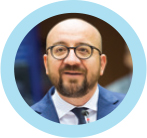
 What does it do?
What does it do?
The European Council sets the EU’s main priorities and overall policy direction, but it does not pass laws. That’s the job of the European Parliament and of the Council of the European Union. Its meetings are called summits and they take place in Brussels at least four times per year.
 Find out more about the European Council.
Find out more about the European Council.
Also check out this mini-documentary for more information about the Council:
THE COUNCIL OF THE EUROPEAN UNION
The Council of the European Union, also known as the Council – or the Council of Ministers, it represents the governments of EU countries.
 Where is it based? Brussels (Belgium).
Where is it based? Brussels (Belgium).
 Who works there?
Who works there?
- Ministers from all EU countries. They represent their country’s interests in the EU.
- The subject area being discussed determines which government minister needs to attend; if the meeting is about pollution, then environment ministers from all EU countries will meet. If the topic is agriculture, then the ministers responsible for agriculture attend the meeting, and so on.
 How does the presidency work?
How does the presidency work?
EU countries take turns to chair meetings, with one country holding the presidency of the Council for 6 months.
 See which country currently holds the presidency: https://www.consilium.europa.eu/en/council-eu/presidency-council-eu/
See which country currently holds the presidency: https://www.consilium.europa.eu/en/council-eu/presidency-council-eu/
 What does it do?
What does it do?
- The Council of the European Union debates and adopts EU legislation together with the European Parliament.
- It decides on the EU’s budget together with the European Parliament.
- It defines and puts into practice the EU’s foreign and security policy. For instance, it decides on international agreements and on EU enlargements.
 Find out more about the Council of the European Union.
Find out more about the Council of the European Union.
For certain decisions the Council can decide by majority vote, whereas for others all countries need to agree. For important decisions, for example admitting a new country to the EU, the ministers of all EU countries need to agree.
 More information about voting rules in the Council:
More information about voting rules in the Council:
https://www.consilium.europa.eu/en/council-eu/voting-system/
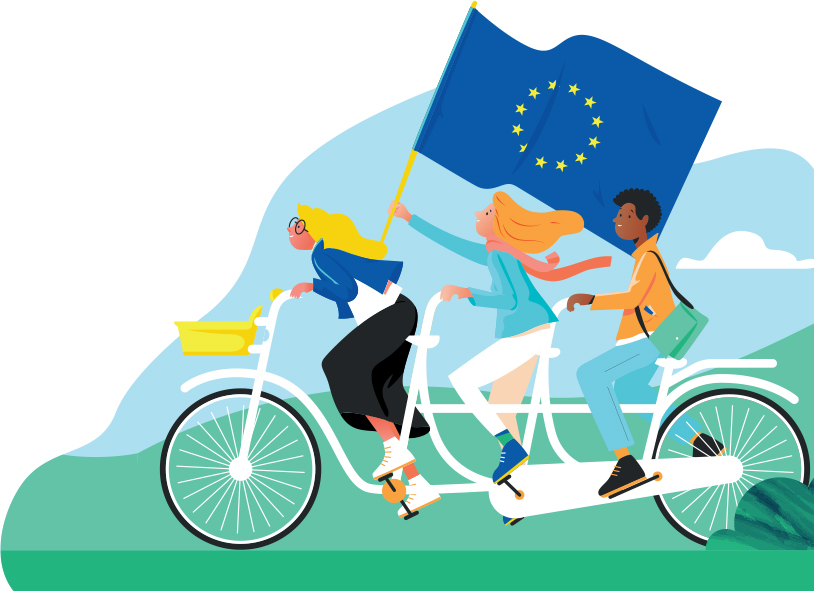
THE EUROPEAN COMMISSION
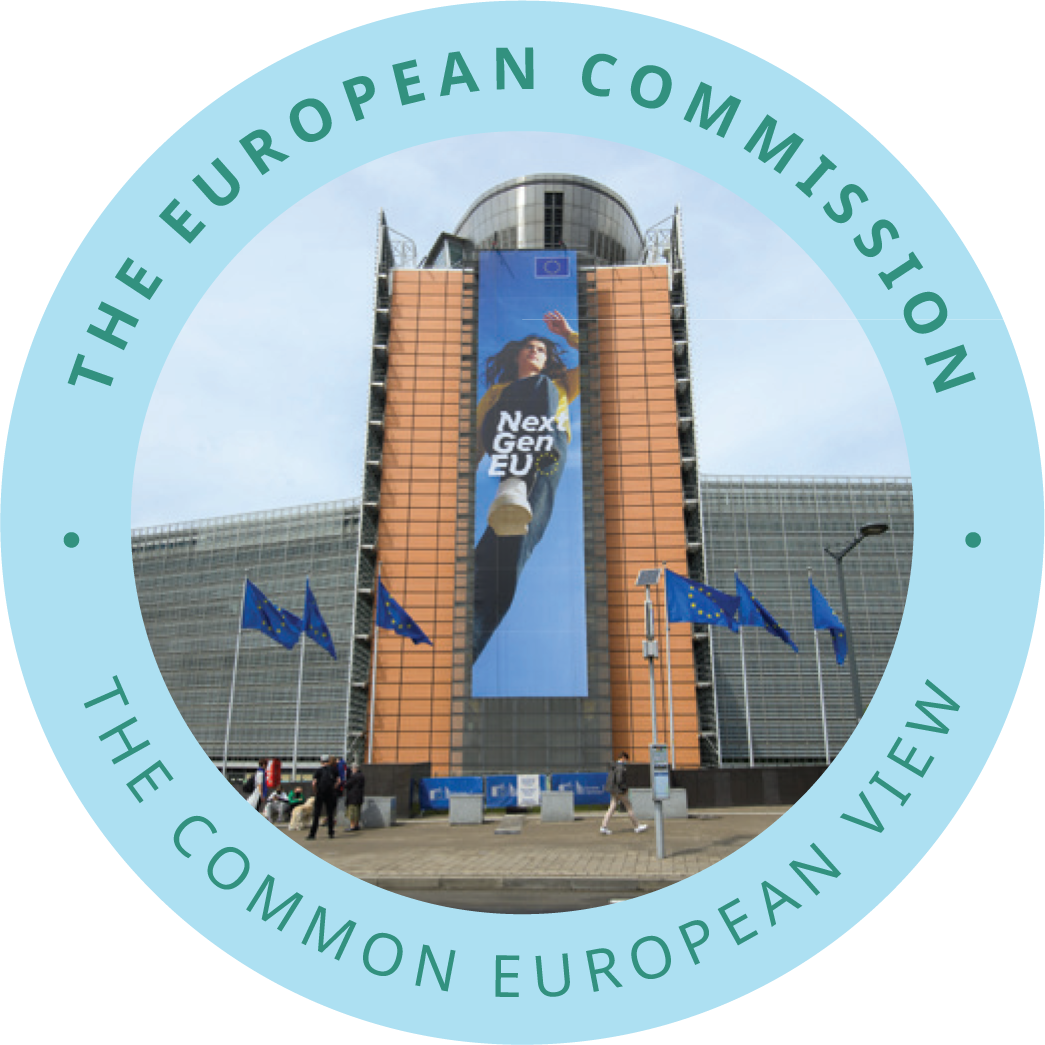
It promotes the general interest of the EU.
 Where is it based? Brussels (Belgium).
Where is it based? Brussels (Belgium).
 Who works there?
Who works there?
- One President and 26 Commissioners.
 Find out more about the current Commissioners.
Find out more about the current Commissioners.
- Every EU country nominates one Commissioner, who needs to be approved by the European Parliament. Their job is not to represent their country’s views but rather to work in the common interest of the EU, with each Commissioner responsible for a particular area of EU activity.
 Who’s the President?
Who’s the President?
Ursula von der Leyen – appointed by national leaders (Heads of State or Government of EU countries), with the approval of the European Parliament.
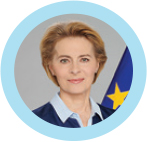
 What does it do?
What does it do?
- The European Commission is responsible for planning, preparing and proposing new EU laws, including the EU budget.
- It manages and puts into practice EU policies and implements the budget.
- It makes sure that EU countries follow European Law.
- It represents the EU around the world together with the European External Action Service (EEAS 4).
While the Commission headquarters are in Brussels, it has representations in all EU countries. The EU has delegations around the world that act like embassies of the EU. You can find more information about the EU offices around the world in Section 6.
 Find out more information about the European Commission.
Find out more information about the European Commission.
The European Parliament, the Council of the European Union and the European Commission are often referred to together as the EU’s ‘institutional triangle’, because although they have distinct roles, what they do is linked.
Have a look at the graph below to understand how it works.
 The European Council – the Heads of State or Government – sets out the EU’s priorities.
The European Council – the Heads of State or Government – sets out the EU’s priorities.
 Based on these, the European Commission proposes new laws.
Based on these, the European Commission proposes new laws.
 The proposals are reviewed and amended, accepted or refused by the European Parliament, together with the Council of ministers. Once they come to an agreement, they approve the laws.
The proposals are reviewed and amended, accepted or refused by the European Parliament, together with the Council of ministers. Once they come to an agreement, they approve the laws.
 The European Commission makes sure that all EU countries observe the new EU laws. If not, it can take action against them.
The European Commission makes sure that all EU countries observe the new EU laws. If not, it can take action against them.
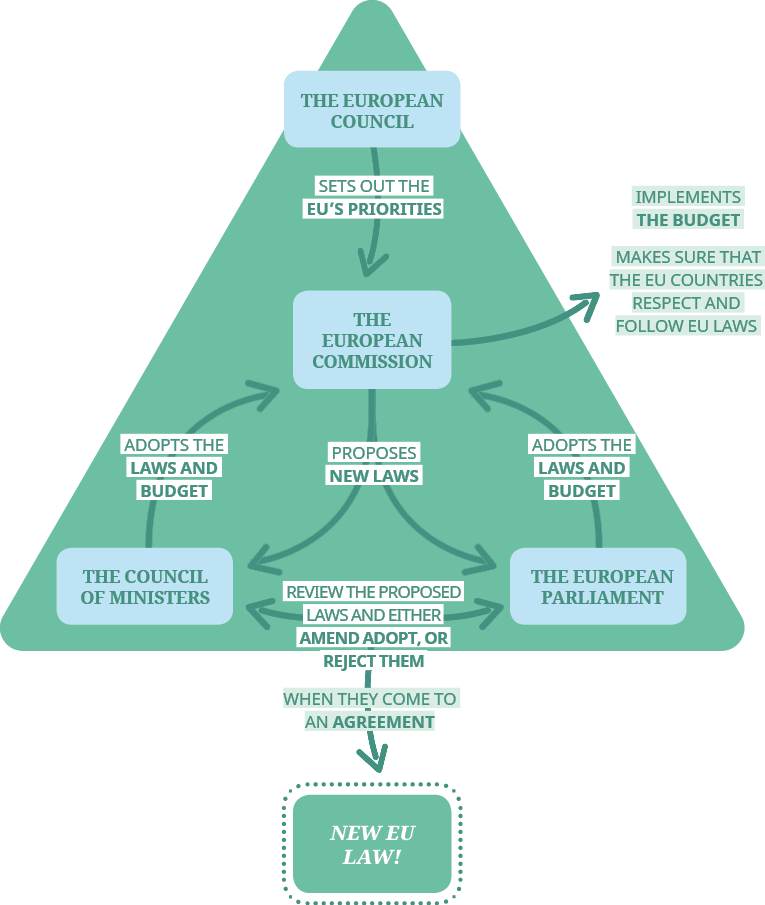
The European Council => sets out the EU's priorities. The European Commission => proposes new laws, => implements the budget, => makes sure that the laws, treaties and programmes are respected. The European Parliament => adopts the laws and budget. The Council of Ministers => adopts the laws and budget. Review the proposed laws and either amend, adopt or reject them. When the come to an agreement => New Law!
THE COURT OF JUSTICE OF THE EUROPEAN UNION
The Court of Justice of the European Union makes sure that EU laws are observed and properly applied in each EU country. If a country does not apply the law properly, the European Commission can issue a formal warning; if the country does not abide by the rules, the Commission can take it to the Court of Justice. The Court of Justice is based in Luxembourg and consists of one judge per EU country.
Find out more about other EU institutions and bodies you may have heard of.
Not everyone working in the EU is a politician; there are also lawyers, translators, interpreters and other experts who work for the EU institutions. If this type of career interests you, you could start with a traineeship in one of the institutions.
 Find out more about traineeships here.
Find out more about traineeships here.
You can visit most of the EU institutions! Many organise visits for schools and young people too. Virtual visits are also possible!
 Find out more.
Find out more.
What benefits are there for citizens, governments and the common European interest through being represented in the EU? What are the drawbacks? Having read this section, do you think it’s accurate to say that ‘Brussels’ has decided something?
Your voice counts!
To make sure that your voice is heard the EU has created the Child participation platform. It's a safe place where you can share what you think about important matters with decision-makers. You can contact other children, interact, discuss and learn about your rights. You can also learn about laws and policies in child-friendly language and get in touch with organisations close to the place where you live!
 Find out more: https://europa.eu/!rcF7HB
Find out more: https://europa.eu/!rcF7HB
You’ve seen how EU countries decide on common laws in the EU institutions. This process would be incomplete without your voice! As a European citizen you can have a say in EU policies in several ways once you reach voting age (which is 18 in most EU countries, 17 in Greece and 16 in Austria and Malta). Belgium and Germany have lowered the voting age for the European elections to 16.
To start with, you can vote in your country’s general election. As we saw earlier in this section, the elected government will represent your country in the Council of the European Union, which plays an important role in deciding on EU laws.
Members of the European Parliament (MEPs) are elected every 5 years, and some of you will be old enough to vote in the next European elections in 2029, so it’s important to keep up to date with what's going on in the European Parliament:
 Find out more: https://www.europarl.europa.eu/portal/en
Find out more: https://www.europarl.europa.eu/portal/en
The elected MEPs are the voice of the people and, together with the Council, they decide on EU laws that affect many aspects of our lives, for example:
- which pesticides are safe to use on the food grown in the EU;
- how much you pay for mobile phone calls when you go to another EU country;
- making children’s toys safe;
- cleaning up the air we breathe and the water we drink and swim in;
- making it easier to study at a university in another EU country.
How do MEPs represent us? Check out this video to understand how the MEPs we elect protect our interests:
 https://www.europarl.europa.eu/at-your-service/en/be-heard/elections
https://www.europarl.europa.eu/at-your-service/en/be-heard/elections
You can give your opinion by taking part in online public consultations. Before making proposals for new EU laws, the Commission seeks the opinions of citizens and interested parties via these consultations.
Find out about the latest public consultations:
 https://ec.europa.eu/info/law/better-regulation/have-your-say
https://ec.europa.eu/info/law/better-regulation/have-your-say
You can initiate or take part in a European citizens’ initiative. You can invite the European Commission to propose a law on a topic close to your heart. However, for the initiative to be considered, you need 1 million people from across the EU to support and sign it.
Find out more about the latest citizens’ initiatives:
This video will talk you through the citizens’ initiative process:
 https://audiovisual.ec.europa.eu/en/video/I-158444
https://audiovisual.ec.europa.eu/en/video/I-158444
The first ever EU citizens’ initiative ‘Right2Water’ gathered 1.6 million signatures. It led to the Commission submitting a proposal to improve the quality of water for people across Europe. In 2021, the proposal became a new EU law.
You can share what’s important to you through the EU Youth Dialogues  https://europa.eu/youth/eu-youth-dialogue_en or the European Youth Forum. These are public debates with EU decision-makers, such as MEPs and national, regional and local politicians. You can find more information on the European Youth Portal:
https://europa.eu/youth/eu-youth-dialogue_en or the European Youth Forum. These are public debates with EU decision-makers, such as MEPs and national, regional and local politicians. You can find more information on the European Youth Portal:  https://europa.eu/!YK98rM
https://europa.eu/!YK98rM
What do you think EU decision-makers need to focus on? If you could make your voice heard by the EU decision-makers, which topic(s) would you raise with them?

Activity: end of Section 4 quiz
 What does ‘MEP’ stand for and who do they represent? How many MEPs are there?
What does ‘MEP’ stand for and who do they represent? How many MEPs are there?
 What’s the difference between the European Council and the Council of the European Union?
What’s the difference between the European Council and the Council of the European Union?
 If your country’s education minister is going to an EU meeting, which institution is holding the meeting?
If your country’s education minister is going to an EU meeting, which institution is holding the meeting?
 True or false: the European Commission passes laws in the EU.
True or false: the European Commission passes laws in the EU.
 What is the minimum number of EU citizens required to support a European Citizens’ Initiative?
What is the minimum number of EU citizens required to support a European Citizens’ Initiative?
Thank you for exploring the EU with us and for following the story of our continent from a disastrous war to cooperation and great opportunities.
The story of the EU is not over. The continent faces new challenges: climate change, the consequences of the COVID-19 pandemic, tensions between regions and the digital transformation, to name but a few. There’s a lot of work to be done so that Europe can continue to provide peace and prosperity for its people.
Now that you’ve learned about the EU, it’s time to make its story your own.
What are some of the big challenges that your own country and the EU will face in the future? You can use Section 2 for inspiration, or look for ideas in the news. Which challenges do you think the EU should focus on, and why?
Once you’ve decided on the most important future challenge, think about what the EU could do about it. If you’re doing this in class, compare your ideas with your classmates.
Which challenges are mentioned the most? Can you agree on what the top three EU responses to these challenges could be?
Solutions to the activities
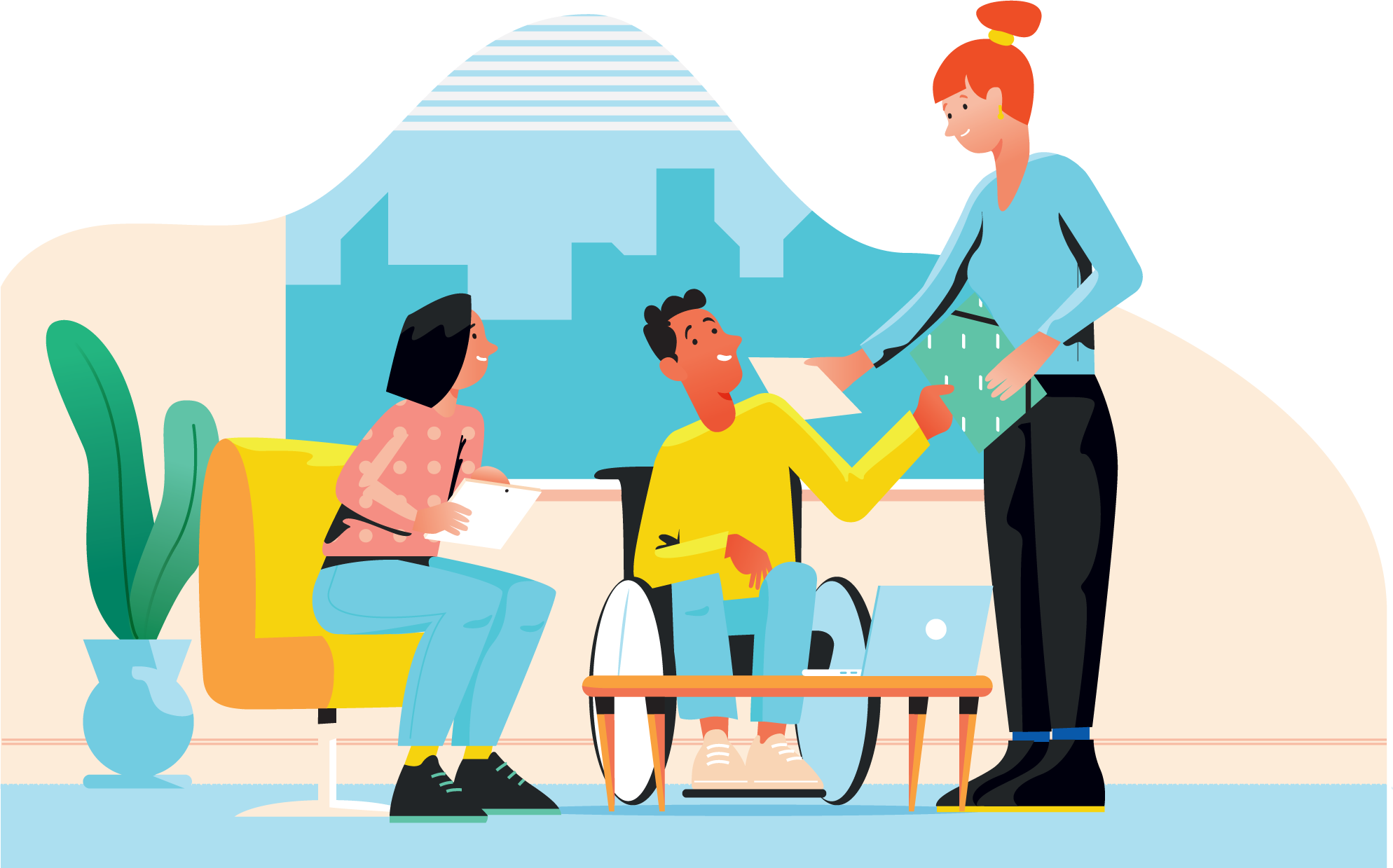
Section 1
Find the countries and capitals
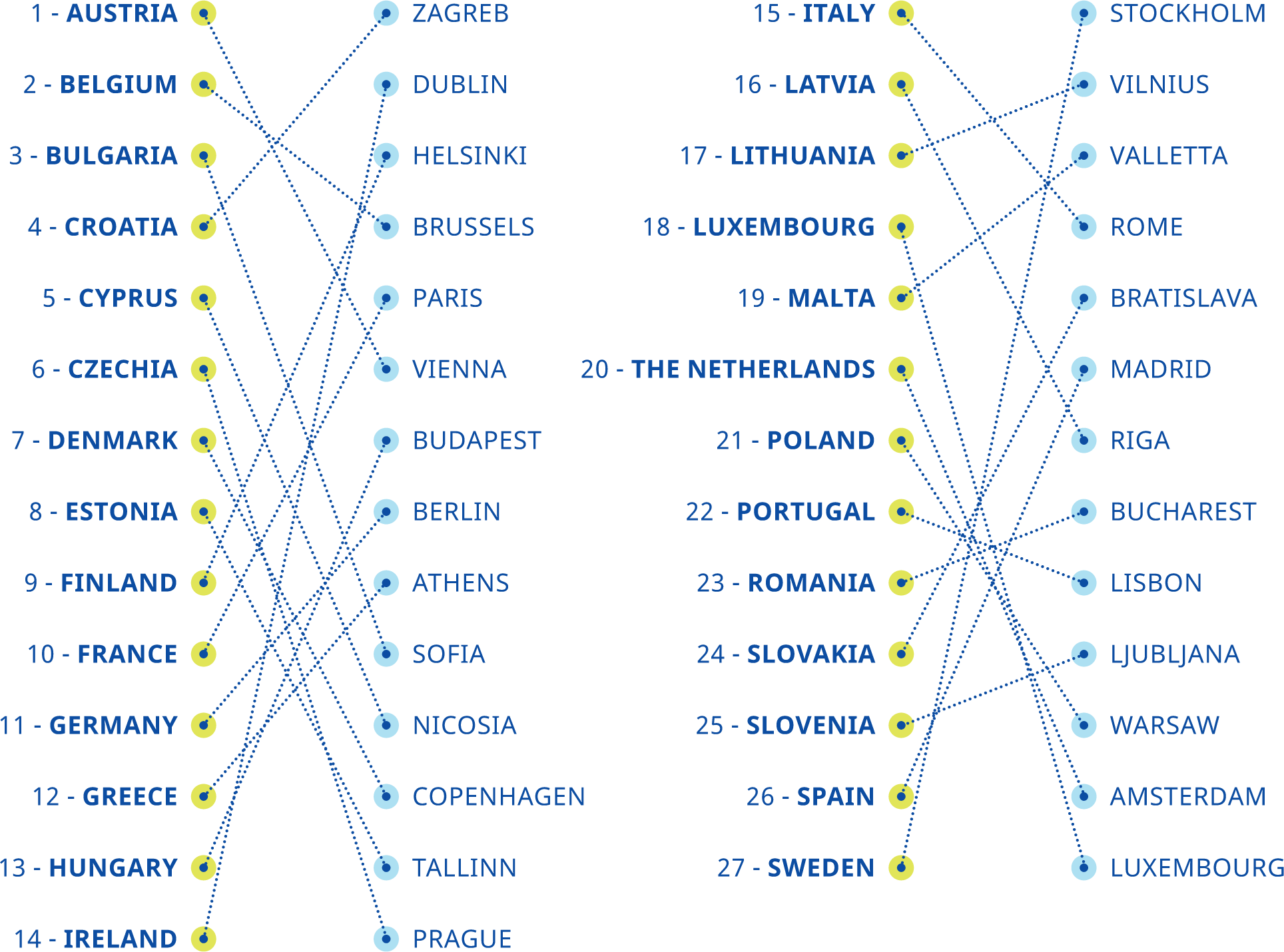
Guess which country the coin comes from?










1 – Italy; 2 – Spain; 3 – Luxembourg; 4 – Estonia; 5 – Malta; 6 – Austria; 7 – Finland; 8 – Greece; 9 – Slovenia; 10 – Germany
1. © Ministero dell'Economia e delle Finanze, Italia – 2. © Ministerio de Asuntos Económicos y Transformación Digital, España – 3. © Banque Centrale du Luxembourg – 4. © Eesti Pank – 5. © Bank Centrali ta' Malta – 6. © Münze Österreich AG – 7. © Valtiovarainministeriö – Finansministeriet, Suomi – 8. © Hellenic Republic Ministry of Finance - Υπουργείο Οικονομικών της Ελληνικής Δημοκρατίας – 9. © Ministrstvo za Finance, Slovenija – 10. © Bundesverwaltungsamt, Deutschland
Connect the monuments to EU countries.
1 – Atomium • Belgium; 2 – Rila Monastery • Bulgaria; 3 – Charles Bridge • Czechia; 4 – Nyhavn • Denmark; 5 – Brandenburg Gate • Germany; 6 – Toompea Castle and the Pikk Hermann Tower • Estonia; 7 – St Patrick Cathedral • Ireland; 8 – Acropolis of Athens • Greece; 9 – Sagrada Familia • Spain; 10 – Eiffel Tower • France; 11 – Banski dvori, seat of the Croatian Government • Croatia; 12 – Tower of Pisa • Italy; 13 – Kyrenia Castle • Cyprus; 14 – Turaida Castle • Latvia; 15 – Gediminas’ Tower • Lithuania; 16 – Grand Ducal Palace • Luxembourg; 17 – Hungarian Parliament Building • Hungary; 18 – Saint John’s Co-Cathedral • Malta; 19 – Windmills • Netherlands; 20 – Schönbrunn Palace • Austria; 21 – Wawel Castle • Poland; 22 – Belem Tower • Portugal; 23 – Bran Castle • Romania; 24 – Lake Bled • Slovenia; 25 – Bratislava castle • Slovakia; 26 – Helsinki cathedral • Finland; 27 – Ericsson Globe • Sweden
End of Section 1 quiz
 EU countries are united by the same values, symbols and goals, and some are also united by the same currency, the euro.
EU countries are united by the same values, symbols and goals, and some are also united by the same currency, the euro.
 There are 27 EU countries and 20 use the euro, so that leaves seven that don’t.
There are 27 EU countries and 20 use the euro, so that leaves seven that don’t.
 The EU has 24 official languages.
The EU has 24 official languages.
 The stars on the EU flag symbolise unity and harmony.
The stars on the EU flag symbolise unity and harmony.
 Human rights are a set of basic rights that belong to every human being from birth. They’re connected to the EU in two ways: human rights are one of the EU’s common values, and they’re protected in the EU’s Charter of Fundamental Rights.
Human rights are a set of basic rights that belong to every human being from birth. They’re connected to the EU in two ways: human rights are one of the EU’s common values, and they’re protected in the EU’s Charter of Fundamental Rights.
Section 2
Do you recognise these labels? What do they mean?

The CE marking indicates that a product meets EU safety, health and environmental protection requirements. It’s required for products that are marketed in the EU, no matter where in the world they have been manufactured.
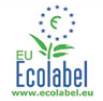
The EU Ecolabel is awarded to products that meet high environmental standards throughout their life cycle: from raw material extraction to production, distribution and disposal. Today, over 75 000 products sold on the EU market have the EU Ecolabel.

The EU organic logo indicates that the product is organic and produced in the EU. The logo can only be used on products that contain at least 95 % of organic ingredients and respect further strict conditions for the remaining 5 %.
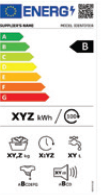
EU energy labels show how electronic appliances rank on a scale from A to G (or A+++ to D, depending on the appliance). A colour code is associated with a letter: green is the most energy efficient and red the least.

The EU Geographical Indications system protects the names of products that originate from specific EU regions and have specific qualities or enjoy a good reputation.
Find out more:  https://europa.eu/!FJfGWY
https://europa.eu/!FJfGWY
What are the questions you should ask yourself before sharing content on social media?
Is the source reliable – does the news come from a well-established news organisation?
Can you find the author’s credentials and previous publications?
Is the story believable and confirmed in other trustworthy sources?
Did the headline and content try to make you feel afraid and/or outraged?
End of Section 2 quiz
 False – the EU is present in your daily life in many ways, from the many projects it funds (for example to improve transport links where you live or the quality of the air you breathe) to the laws it passes to protect your rights when you shop on and offline!
False – the EU is present in your daily life in many ways, from the many projects it funds (for example to improve transport links where you live or the quality of the air you breathe) to the laws it passes to protect your rights when you shop on and offline!
 The programme that allows you to volunteer abroad for a cause close to your heart is called the European Solidarity Corps.
The programme that allows you to volunteer abroad for a cause close to your heart is called the European Solidarity Corps.
 False – you have 2 weeks to return a product you bought online if you change your mind.
False – you have 2 weeks to return a product you bought online if you change your mind.
 Natura 2000 is a network of protected areas in the EU.
Natura 2000 is a network of protected areas in the EU.
 Thanks to the EU General Data Protection Regulation (GDPR), your personal information – name, address, age and so on – is protected. It cannot be used without your permission or for purposes that you haven’t agreed to.
Thanks to the EU General Data Protection Regulation (GDPR), your personal information – name, address, age and so on – is protected. It cannot be used without your permission or for purposes that you haven’t agreed to.
Section 3
End of Section 3 quiz
 The six founding countries of the EU are Belgium, France, Germany, Italy, Luxembourg, and the Netherlands. The community they founded in 1951 was called the European Coal and Steel Community.
The six founding countries of the EU are Belgium, France, Germany, Italy, Luxembourg, and the Netherlands. The community they founded in 1951 was called the European Coal and Steel Community.
 Check the maps in Sections 1-3 to find the correct answer.
Check the maps in Sections 1-3 to find the correct answer.
 Croatia was the most recent country to join the EU, in 2013.
Croatia was the most recent country to join the EU, in 2013.
 The EU was awarded the Nobel Peace Prize in 2012 for its role in transforming most of Europe from a continent of war to a continent of peace.
The EU was awarded the Nobel Peace Prize in 2012 for its role in transforming most of Europe from a continent of war to a continent of peace.
 The EU pioneers are the visionary women and men who contributed to making the EU what it is today.
The EU pioneers are the visionary women and men who contributed to making the EU what it is today.
Section 4
End of Section 4 quiz
 MEP stands for Members of the European Parliament. MEPs represent EU citizens, and there are 720 altogether.
MEP stands for Members of the European Parliament. MEPs represent EU citizens, and there are 720 altogether.
 The European Council brings together EU Heads of State or Government to decide on EU political priorities and major goals for the future of the EU. The Council of the European Union, on the other hand, is where ministers of national governments discuss and adopt EU laws on a specific topic.
The European Council brings together EU Heads of State or Government to decide on EU political priorities and major goals for the future of the EU. The Council of the European Union, on the other hand, is where ministers of national governments discuss and adopt EU laws on a specific topic.
 If your country’s education minister is going to an EU meeting, they will go to the Council of the European Union.
If your country’s education minister is going to an EU meeting, they will go to the Council of the European Union.
 False – the European Commission proposes laws based on the general goals set out by the European Council. The laws are passed by the European Parliament and the Council of the European Union.
False – the European Commission proposes laws based on the general goals set out by the European Council. The laws are passed by the European Parliament and the Council of the European Union.
 The minimum number of EU citizens required to support a European citizens’ initiative is 1 million, from at least seven EU countries, because that’s the number of signatures needed before the Commission can consider such an initiative.
The minimum number of EU citizens required to support a European citizens’ initiative is 1 million, from at least seven EU countries, because that’s the number of signatures needed before the Commission can consider such an initiative.
More information about the EU
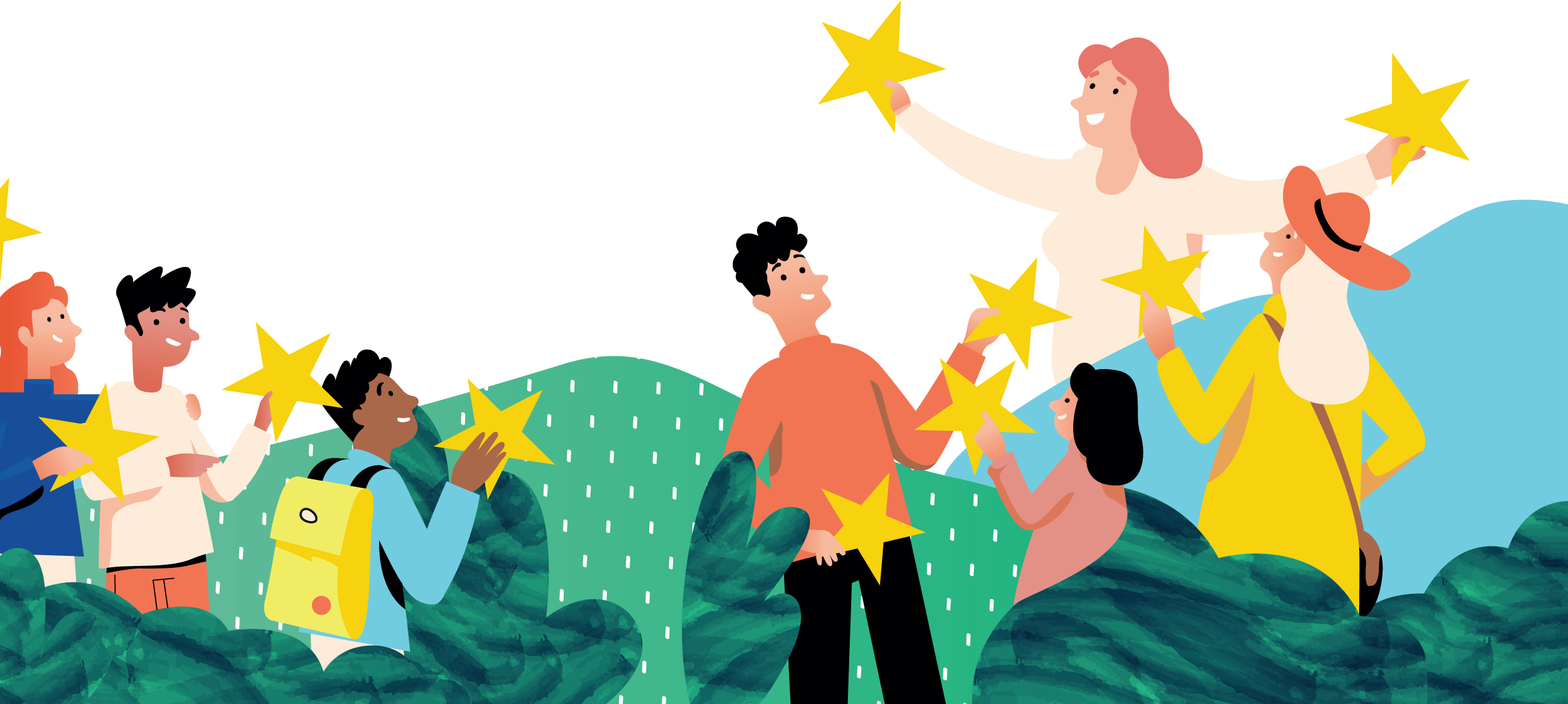
We hope that after reading this publication you know more about the EU, how it works and what it brings to your daily life. If you want to discover more, here are a few ideas:
The EU Online
LEARNING CORNER
The EU interinstitutional website for 5–18-year-olds and their teachers and parents, with games, videos and many other learning materials available in all EU official languages.
 https://europa.eu/learning-corner/
https://europa.eu/learning-corner/
EUROPA
The official website of the EU, where you’ll find information about EU policies, links to the EU institutions’ websites, etc.
 https://europa.eu/european-union/index_en
https://europa.eu/european-union/index_en
THE EUROPEAN YOUTH PORTAL
Information about opportunities in Europe and beyond, on jobs, education, travel for young people, etc.
YOUR EUROPE
A website with advice for people living in the EU on a variety of practical topics.
 https://europa.eu/youreurope/citizens/index_en.htm
https://europa.eu/youreurope/citizens/index_en.htm
EU PUBLICATIONS
A website with a wealth of PDF, eBook and print publications about the EU.
 https://op.europa.eu/en/publications
https://op.europa.eu/en/publications
The EU in person
Throughout the EU there are hundreds of local EU information centres. Find the address of the centre nearest to you here:
 https://europa.eu/european-union/contact_en
https://europa.eu/european-union/contact_en
The EU on the phone or by email
EUROPE DIRECT
A service that answers your questions about the EU:
 by phone, free from anywhere in the EU to reach an operator who speaks your language 5:
by phone, free from anywhere in the EU to reach an operator who speaks your language 5:
 00 800 6 7 8 9 10 11(certain operators may charge for these calls,
00 800 6 7 8 9 10 11(certain operators may charge for these calls,
 on the standard number:
on the standard number:  +32 22999696,
+32 22999696,
 by email:
by email:  https://europa.eu/european-union/contact_en
https://europa.eu/european-union/contact_en
You can also obtain EU information in every EU country from:
The European Commission Representations
 https://commission.europa.eu/about-european-commission/contact/representations-member-states_en
https://commission.europa.eu/about-european-commission/contact/representations-member-states_en
The European Parliament Liaison Offices
 https://www.europarl.europa.eu/at-your-service/en/stay-informed/liaison-offices-in-your-country
https://www.europarl.europa.eu/at-your-service/en/stay-informed/liaison-offices-in-your-country
You can obtain EU information in other parts of the world from:
The European Union Delegations
 https://eeas.europa.eu/headquarters/headquarters-homepage/area/geo_en
https://eeas.europa.eu/headquarters/headquarters-homepage/area/geo_en
Follow the European Commission on social media
-----------------------------
1 Treaty: A significant agreement that’s binding on two or more nations.
The EU treaties have shaped the EU throughout the years and continue to guide its work today.
2 One of the main ideas behind the EEC was to share a common market and make it easier to do business together.
3 Enlargement: whenever a country or a group of countries joins the EU, it’s called an EU enlargement.
4 The European External Action Service is responsible for foreign and security policy, while the Commission deals with trade, humanitarian aid and international agreements with other countries or organisations, such as the Paris Climate Agreement.
5 The Europe Direct Freephone number is only available if you are calling from within the EU.
The booklet ‘Let’s explore Europe!’ is available at:
https://europa.eu/learning-corner/home_en
https://op.europa.eu/en/publications
European Commission
Directorate-General for Communication
Editorial Service and Targeted Outreach
1049 Brussels
BELGIUM
Manuscript updated in December 2024
Luxembourg: Publications Office of the European Union, 2025
| ISBN 978-92-68-19676-2 | doi:10.2775/885385 | NA-09-24-621-EN-C | ||||
| ISBN 978-92-68-19649-6 | doi:10.2775/016053 | NA-09-24-621-EN-N | ||||
| HTML | ISBN 978-92-68-19638-0 | doi:10.2775/950281 | NA-09-24-621-EN-Q |
© European Union, 2025
The Commission’s reuse policy is implemented under Commission Decision 2011/833/EU of 12 December 2011 on the reuse of Commission documents (OJ L 330, 14.12.2011, p. 39). (ELI: http://data.europa.eu/eli/dec/2011/833/oj).
Unless otherwise noted, the reuse of this document is authorised under the Creative Commons Attribution 4.0 International (CC BY 4.0) licence (https://creativecommons.org/licenses/by/4.0/). This means that reuse is allowed, provided appropriate credit is given and any changes are indicated.
For any use or reproduction of elements that are not owned by the European Union, permission may need to be sought directly from the respective rightholders.
Illustrations: © Thomas d’Addario
All images © European Union, unless otherwise stated.



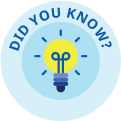



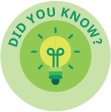

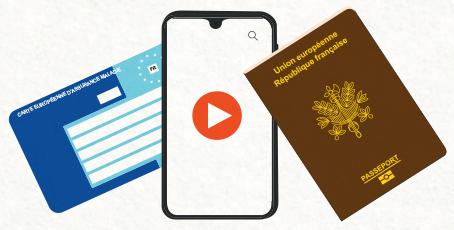


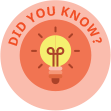
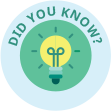

 @europeancommission
@europeancommission European Commission
European Commission @EU_Commission
@EU_Commission EU Spotify
EU Spotify